Distinguished Fellow of the Botanical Society of America
|
The "Distinguished Fellow of the Botanical Society of America" is the highest honor our Society can bestow. Each year, the Distinguished Fellow Committee solicits nominations widely from the membership, evaluates candidates, and selects those to receive an award. Awardees are chosen based on their outstanding contributions to the mission of our scientific Society. The committee identifies recipients who have demonstrated excellence in basic research, education, public policy, or who have provided exceptional service to the professional botanical community, or who may have made contributions to a combination of these categories. All nominated awardees must adhere to the BSA Guidelines for Professional Ethics and the Ethical Guidelines for Nominated Awards.
Requirements for Nomination. Nominations will be submitted by BSA members through the BSA online awards portal and should include: (1) a formal letter of nomination including a clear statement of (a) the notable accomplishments of the candidate; (b) disciplines or areas that have been significantly influenced by the contributions of the candidate; (c) at least three letters of support and evaluation including complete contact information for each letter writer (email, postal address, phone) supporting and evaluating the candidate’s nomination; (2) the curriculum vita of the candidate being considered, and 3) the Professional Conduct Disclosure Form from the nominator and any other letter writers All items should be combined into one PDF file that will be submitted with the nomination form. Please feel free to contact the Executive Director with any questions about the nomination and application process.
All nominated awardees must adhere to the BSA Guidelines for Professional Ethics and the Ethical Guidelines for Nominated Awards.
Submit Your Nomination
This award is now open for nominations.
Deadline - March 15, 2025
Current BSA members can access the awards portal by clicking here and logging in with your BotanyID/Password. Once signed in, click on the "2025 - Distinguished Fellow Award" link and you should see a blue button that says "+ Create New Nomination" at the bottom if your login was successful.
Please feel free to email bsa-manager@botany.org with any questions about the nomination and application process.
|
We are pleased to present the Distinguished Fellows of the Botanical Society of America
|

|
Dr. Steven Neil Handel, Rutgers University - 2024
Steven Handel, Distinguished Professor of Ecology and Evolution at Rutgers, is an internationally recognized botanist who has experimentally explored mutualisms, plant population growth, ecological genetics, and now applies these findings to the ecological restoration of urban degraded lands. Dr. Handel aims to understand new ecological restoration protocols, based on a botanical foundation, and use these in the design of public lands by collaborating with landscape architects. This groundbreaking collaboration is a hallmark of his recent work and opens new doors for the application of botanical knowledge to the public sphere. Dr. Handel’s collaborative efforts with landscape architects and urban planners have been instrumental in transforming degraded urban landscapes into thriving ecosystems. As examples - projects such as the restoration of Brooklyn Bridge Park and the Jamaica Bay Wildlife Refuge, exemplify his commitment to integrating scientific rigor with practical application.
He has been a BSA member for 40 years, the Genetics Section chair, served on several BSA committees and the advisor of four Young Botanist Awardees. Dr. Handel’s dedication to education is evident through his mentorship of numerous graduate students and in the many nomination letters we received. Working with Steve is a pleasure. He teaches his students and PostDocs how to encourage and to mentor, to be curious and enjoy life, and to remember the humanity of the people they are teaching and to use kindness always.
Steve is leaving a lasting impact on the field of botany and ecological restoration. His work continues to inspire and educate, emphasizing the vital intersection of several disciplines. Dr. Handel’s actions to improve the botanical components of public landscapes has expanded the reach of our field in important new ways and we are pleased to honor him with this Distinguished Fellows Award.
|
|
|
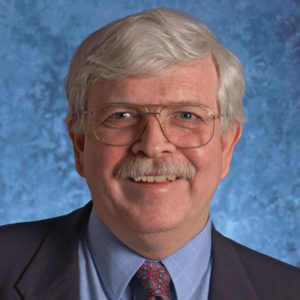
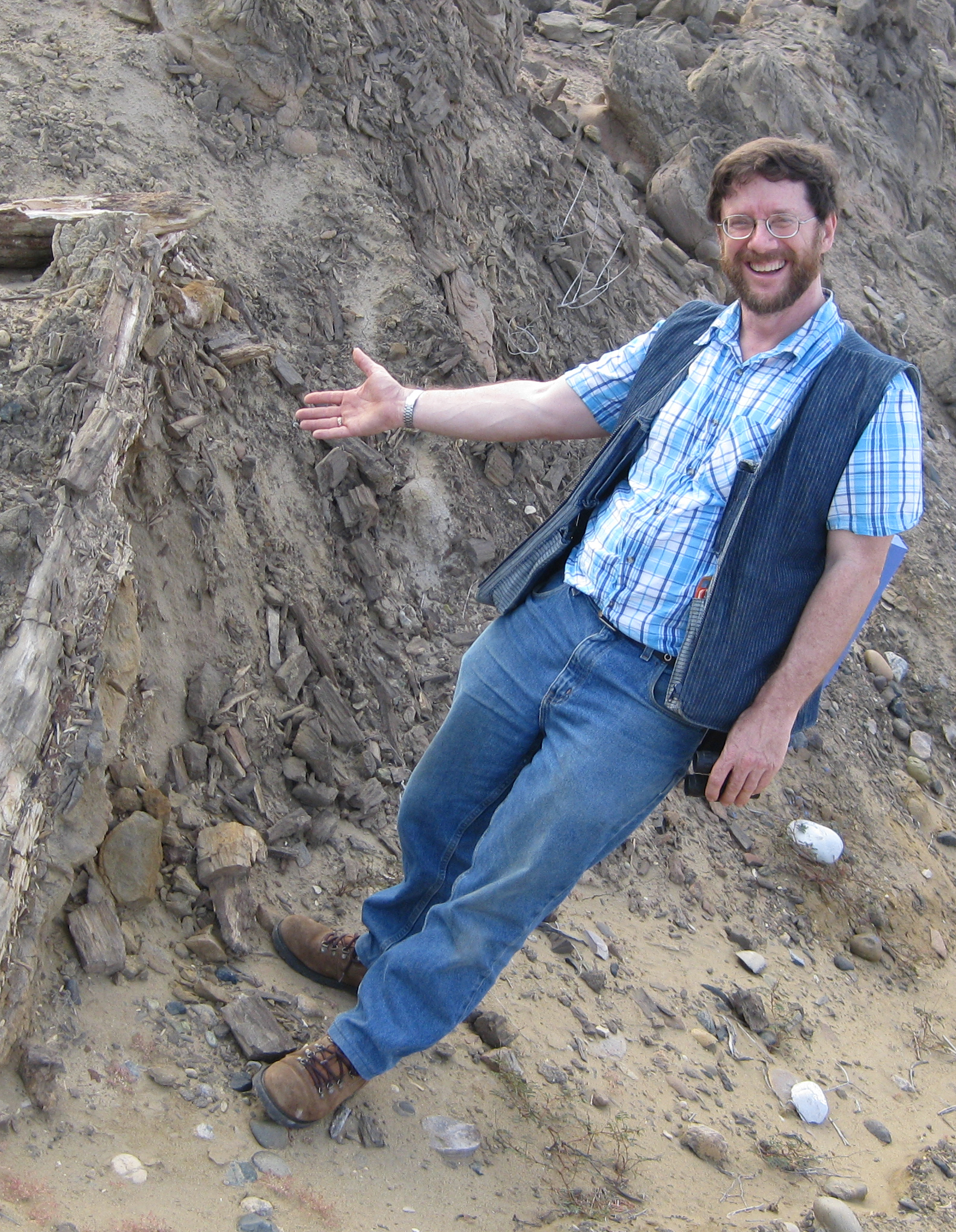
|
Dr. Thomas Givnish, University of Wisconsin-Madison - 2023
Dr. Steven Manchester, Florida Museum of Natural History - 2023
Dr. Thomas Givnish is an internationally renowned scientist who is acclaimed for his “sharp intellect, breadth of knowledge, creativity, and productivity.” He is known for his unique interdisciplinary research and for his breadth of expertise, making major contributions to such diverse areas as ecophysiology, systematics, biomechanics, plant-animal interactions, adaptive radiation, and species diversification and extinction. Over the past 51 years, Dr. Givnish has authored, coauthored, or edited more than 160 papers, books, and book chapters, which have been cited more than 21,000 times. And he has sustained substantial funding from the National Science Foundation to support his research for many years.
Tom has made foundational contributions in the fields of ecology and systematics: “his work on the evolution of monocots, bromeliads, and carnivorous plants, among other groups, has been equally as transformative as his experimental and theoretical studies on plant functional traits, plant height, leaf form, and photosynthetic physiology.” Tom’s early work in plant ecology was grounded in his keen interest and background in mathematics and economics. He developed mathematical models inspired by economic theory to explore and explain the adaptive nature of leaf form and plant height. He was an early adopter of molecular techniques for studying ecology and evolution, and he blended his work on adaptation with phylogenetic resources, applying the concept of adaptative radiation to plants. His 1997 book Molecular Evolution and Adaptive Radiation, co-edited with Ken Sytsma, remains authoritative. His work in phylogenetic systematics, and his embrace of new methods and approaches, has kept him at the forefront of developments in the field. Tom’s focus on monocots has transformed our understanding of the evolutionary history and higher-level relationships of that group. And he’s showing no signs of slowing down.
Tom has immense and infectious enthusiasm for both fieldwork and the lab, and his knowledge of plant diversity, natural history, and ecology is encyclopedic and insightful. He shares his knowledge and passion for plants with his students and colleagues and reaches beyond the University as well through the “Wednesday Night @ the Lab” televised outreach talks, presentations to naturalist and gardening groups, and engagement with local conservation groups. He is also involved in the DNR Citizens Advisory Board for Wisconsin Dells Natural Area and the U.S. Fish & Wildlife Service National Recovery Team for the Karner Blue butterfly. He is a botanist well-deserving of the BSA Distinguished Fellow Award.
Dr. Steven Manchester is one of the world’s leading specialists in fossil plants, whose research has had “a profound impact on the directions in the scientific exploration of angiosperm diversification and biogeographic patterns, particularly through the Cenozoic.” Through extensive field work throughout the world, including in the western US, eastern Asia, India, Europe, and Panama, and through careful study, he has documented some of the earliest known fruits for several families of flowering plants, including the banana (Musaceae), kiwi (Actinidiaceae), grape (Vitaceae), and walnut (Juglandaceae) families. Dr. Manchester often works at the “interface of the living and the dead, working closely with angiosperm systematists to integrate fossils into phylogenetic trees of living species.” He also has worked with molecular systematists to provide fossil calibration points for molecular dating analyses. His broad network of international collaborations has included researchers from all career stages and backgrounds, and he is known to be generous with his time and ideas.
In addition to his impressive publication record, his many invited presentations and research grants from NSF and other funding sources, Steve has also been deeply engaged in public outreach engaging amateur collectors and students in his field campaigns. He is described by several colleagues to be hard-working, with a passion for field work, which he considers essential to paleobotanical research. He is also described as kind, thoughtful, modest, having a great sense of humor, and intensely dedicated to student training and mentorship.
Steve is a life member of both the Botanical Society of America and the American Society of Plant Taxonomists. He has held leadership roles in the Paleobotanical Section of BSA and the International Organisation of Palaeobotany (IOP), in which he served as President for many years. He is a Foreign Representative Member of The Gondwana Geological Society based in Nagpur, India, and is active in the Association of Wood Anatomists and the American Association of Stratigraphic Palynologists. He has served on his department’s Natural History Advisory Committee and chairs his institution’s IDEA (Inclusion, Diversity, Equity, and Accessibility) Committee, which recently developed an endowed scholarship fund for graduate students of minoritized groups and an internship program for students from groups that are underrepresented in science in the US. He is a great model for service to the professional community and well deserving of the BSA’s Distinguished Fellow Award.
|
|
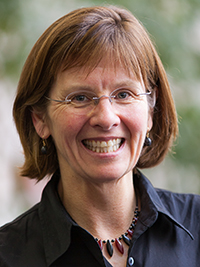 |
Dr. Pamela Diggle, University of Connecticut - 2022
Dr. Pamela Diggle is a world-class scientist, teacher, mentor, Editor, and leader in the field of botany, and has provided invaluable service to the Botanical Society of America (BSA) throughout her impressive career. She is a world leader in plant morphology, development and evolution (“devo-evo”) and is a recognized authority on the integration of developmental ideas into plant reproductive biology. Her research focuses on the evolution of morphological diversity among plants with particular emphasis on understanding how features of development shape the dynamics of evolutionary change. Her approaches range from analyses of developmental responses of individuals to contrasting environmental conditions, to understanding how development has evolved over time in groups of closely related plants, and to understanding differences across all of flowering plants.
Dr. Diggle’s classic work on labile sex expression in the Tomato genus (Solanum) demonstrated that plants can regulate whether they produce hermaphroditic or male flowers, depending on the extent of fruit production within a single blooming period. This remarkable developmental plasticity in sex expression is now known to be a general phenomenon across flowering plants. Dr. Diggle has also made important contributions to several other outstanding problems in plant biology, including how plant architecture influences sexual dimorphism in gender dimorphic species, the role of development in shaping phenological responses to temperature variation (particularly warming due to climate change), and the ecological importance of preformation of meristems in alpine species. Her work is regularly funded by the US National Science Foundation (NSF), including for “microMORPH: Microevolutionary Molecular and Organismic Research in Plant History,” meetings that bring together faculty and graduate students to focus on plant morphology and related areas.
Dr. Diggle is currently the Editor-in-Chief of the BSA’s flagship journal, the American Journal of Botany (term 2015-2025). Since she assumed the Editorship, several positive changes to the journal are evident that enhance the profile of botany, its relevance, and diversity. She has spearheaded several initiatives, including the “On the Nature of Things” essays, the recently formalized series of invited reviews and topic-specific special issues, and the increased diversity and international representation of Associate Editors—all actions that have noticeably raised the journal’s impact (and its impact factor). In addition, Dr. Diggle has been actively involved with the BSA in other areas, serving on several committees, and on the Board, first as Council Representative, then as Secretary, and lastly as President-Elect, President, and Past-President. She has offered workshops for authors, held focus groups with grad students and postdocs, and reached out to BSA sections to encourage members to contribute to their Society journals. Dr. Diggle is widely respected as having sound judgment, an even-handed approach to problems, and loyalty to the institutions and societies she has worked for. BSA has greatly benefited from her service and expertise over the years.
|
|
 |
Dr. Qiuyun (Jenny) Xiang - 2021
Dr. Xiang is well known globally for her diverse contributions to plant systematics and evolution. She is best known for her extensive work on Cornaceae, for which she is the world’s expert, as well as her numerous important contributions to our understanding of the well-known Eastern Asia–Eastern North America floristic disjunction. Few groups of plants are now as well-studied as dogwoods, thanks to Jenny’s dedication. Her expertise is diverse and spans classical taxonomy, molecular systematics/phylogenetics, genomics, and developmental genetics. Much of her recent work focuses on population-level and phylogeographic problems. She has an extremely rich publication record and has also maintained continuous NSF support throughout her long career.
One of Dr. Xiang’s most important contributions has been fostering close interactions and research connectivity between botanists in China and the US. Since 2008, she and colleagues in China have taught the "East Asia–North America Field Botany and Ecology Course" at Zhejiang University and North Carolina State University, making a great impact on the training of Chinese and American students in this field. This has been a remarkable opportunity for students from both countries and has helped to foster new international research, as well as many friendships. These student exchanges have had significant impact on the number and quality of collaborations between US and Chinese labs in the botanical sciences.
Jenny has been a life-long member of the Botanical Society of America. She is an outstanding mentor to students, post-docs, and young faculty, often bringing them along to annual scientific conferences including Botany conference. Her courses have inspired both plant biology majors and non-majors to think more deeply about plant evolution and diversity. She is well respected
and well loved by her mentees, whether they are from the US or China or elsewhere in the world. In addition, Jenny has been an active reviewer for the American Journal of Botany, served on several BSA committees, is a frequent organizer of workshops, symposia, special journal issues, and more – all in service to her profession.
|
 |
Dr. Candace Galen, Dr. James Leebens-Mack - 2020
In her nearly 40-year career, Dr. Candace Galen has been a champion for plant science, conservation, and education. In particular, Dr. Galen’s career has had a major impact on the field of plant reproductive ecology and evolution. She was an innovator at a time when plant population biology was a budding field and stands out as a trail blazer in many dimensions. A hallmark of Dr. Galen’s research is elegant experiments to test fundamental evolutionary principles in the wild. Her research is typified by a blend of keen observation in the field, novel conceptual models, and new tools to understand not just pattern, but also process. Her work on alpine skypilots, Polemonium viscosum, revolutionized our understanding of floral trait evolution by integrating across ecological and evolutionary theory. Recent work documented evolutionary changes in pollinator trait evolution in response to climate change and illustrated the use of noninvasive monitoring of declining pollinators.
In addition to the numerous graduate students and postdocs she trained, nearly half of the 40 undergraduate students that worked in her lab became co-authors on research papers. In the broader context, her commitment to education is also evident in that she was one of the leaders of University of Missouri’s GK-12 “Show me Nature from Elements to Ecosystems” STEM grant.
Dr. Galen’s passion for public engagement has also led to formative change in conservation of natural resources. Her dedication to plant conservation and ability to convey complex and sometimes “hot button” topics (e.g., climate change) to the public led to partnerships with the Mountain Area Land Trust to preserve her long-time research site, Pennsylvania Mountain, in Colorado. Her ability to form these partnerships, to inspire broad groups, will lead to a lasting impact on the public and on biodiversity.
Dr. Galen has had a remarkable and impactful career as a botanist, educator, and conservation advocate, and has served as an important role model of strong, independent thought for generations of students.
James Leebens-Mack has been described as a “genuine star in the firmament of plant molecular systematics and evolution.” One of the more notable aspects of his record is that he not only publishes top-notch empirical work from his own lab, and on a great diversity of topics, but he has a knack for communitybuilding and forging collaborations. Colleagues from around the country seek him out to participate in some of the most exciting genomic research projects going on in the world today.
Dr. Leebens-Mack has made many significant contributions to our understanding of plant diversity. In just the last several years, he has published papers on the molecular underpinnings of various aspects of seed and flower biology, sex determination, storage roots, CAM photosynthesis, and small RNA biology. And even with these focused studies, Dr. Leebens-Mack has been pushing the envelope by “going big,” with the publication of numerous whole genome sequences, and then even grander with the publication last year of the 1,124 plant transcriptome project, which he led. The landmark accomplishment represents the culmination of Dr. Leebens- Mack having forged collaborations across dozens of institutions. This achievement provides key genomic resources for the entire botanical community, as well as insight into the phylogeny of all green plants.
The broader impact of his skills as a mentor should not be overlooked. Dr. Leebens-Mack is readily available to give his time to help other researchers and is particularly good at helping students and postdocs. He regularly answers questions about techniques or troubleshooting from across our community, especially assisting early-career researchers with practical advice about their unpublished data sets. Dr. Leebens-Mack has shown real leadership for our community through his fearless approach to developing and applying new techniques, and new ways of thinking.
|
|
Dr. Sean Graham, Dr. David W. Lee, Dr. Ann Sakai, Dr. Steve Weller - 2019
Dr. Sean Graham is widely recognized as one of world’s leading and innovative students of plant systematics and is often on the leading edge in several important areas of plant evolutionary biology. Sean became a full professor at the University of British Columbia in 2012 and since 2016 has served the role as Head of the Department of Botany. He has played a key role in many major initiatives to reconstruct the phylogeny of land plants, using intensive sampling of genes and species to yield a robust reconstruction of the evolutionary tree of this group. Sean's work has three characteristics worthy of highlighting: (1) it is focused on the broad relationships of major groups, and thus serves as a framework for many subsequent studies; (2) it uses dense sampling of many genes and many species, to provide more robust results than in previous studies; and (3) the data are gathered with great care. His penchant for double- and triple-checking his sequence data produces results that serve as a gold standard for the field.
Dr. Graham has also distinguished himself for his record of generous and highly effective service to the botanical community. For example, as BSA’s Director-at-Large for Publications over the past six years, he played a leading role in the decision to move to a commercial publisher, and shepherded the Society through the process of selecting a publishing partner and successfully transitioning the BSA journals to publication by Wiley. Sean has also served as an associate editor for the American Journal of Botany for many years and been a key contributing member on the Publications Ethics Committee. He is a caring and skilled teacher of both undergraduate and graduate students and a responsive colleague to all whom request his advice.
Dr. David W. Lee, Florida International University, is a plant functional ecologist especially interested in tropical and subtropical plants. He has done pioneering research on the physical basis and functional significance of plant color and has researched light environments in tropical forests, leaf optical properties, structural color in leaves, anthocyanin function (including autumn leaf color), light quality/quantity effects on seedling and plant development, and plasticity, especially in leaves. In addition to his record in basic plant research, he has an outstanding record of public outreach for the botanical sciences, which has included the publication of 11 popular but also scientifically rigorous books on botanical topics. His 2007 book, Nature’s Palette: The Science of Plant Color, won the Best of Biology and Life Sciences Award from the Association of American Publishers. His other books range from a book presenting the writings of the plant explorer David Fairchild (The World as Garden), through one of photographs and descriptions of the trees of south Florida (Wayside Trees of Tropical Florida), to his recent book on leaves (Nature’s Fabric, Leaves in Science and Culture).
David has been a life-long member of the Botanical Society of America. In addition to his strong record of research and service to the BSA and the public, he has been an excellent teacher and was awarded the BSA Charles Edwin Bessey Teaching Award in 2006 in recognition of his outstanding record in botanical education. He was the first botanist in a fledgling Department of Biological Sciences at Florida International University, a brand-new public university in Miami, and he worked to develop a robust program in the plant sciences at this young university, initiating hiring of botanical faculty and developing formal collaborations between FIU and other botanical institutions.
Dr. Ann Sakai and Dr. Steve Weller, both of University of California, Irvine, have significantly advanced our understanding of the evolution of plant breeding systems while promoting Hawaiian plant conservation and serving the botanical community in numerous important capacities. They have made major contributions to our understanding of the evolutionary forces that lead to shifts in heterostyly as well as in floral condition, principally in two study systems: the evolution of heterostyly in Oxalis (Oxalidaceae) and the evolution of dioecy and wind pollination in Schiedea (Caryophyllaceae). The NSF has recognized the value of their work by essentially continually funding it over the last 30 years. As with all great researchers, they have followed research questions wherever they lead, regardless of technique. Very few botanists are as deeply involved with all facets of botany, from systematics to ecology, as are Drs. Sakai and Weller. Their stellar research careers have been rewarded by election as fellows to the AAAS.
Much of their work has also had direct and tangible impacts on conservation of Hawaiian Schiedea, while affording great respect to Hawaiian culture. Their greenhouse collection (which includes 25 of 32 extant species, almost all of which are federally endangered) forms an important reservoir of genetic diversity, and their ongoing research has documented patterns of genetic diversity, demography, and gene flow that are absolutely essential for Schiedea species conservation management programs. Much of their recent research has also focused on ways to increase Schiedea abundance in Hawaii, in collaboration with the National Tropical Botanical Garden and numerous state and federal agencies across Hawaii.
Dr. Sakai and Dr. Weller have also been deeply involved in service to the BSA and greater botanical community. Throughout their careers they have made education, outreach, and inclusion central parts of their work. For example, Dr. Sakai is a co-founder and leader of BSA’s highly successful PLANTS (Preparing Leaders and Nurturing Tomorrow's Scientists) program, which is now in its second 5-year NSF grant period. The PLANTS program is designed to increase representation from undergraduate communities who have historically not been represented in botany by bringing 10-15 such students to the Botany conference each year. More broadly, Dr. Sakai has been deeply involved in numerous initiatives at UC Irvine to improve diversity, including initiatives to foster collaboration with historically black colleges and universities, and between Mexican and Californian institutions. Dr. Weller was BSA president from 2010-2013, where he helped establish the Emerging Leader Award and secured the agreement with the Missouri Botanical Garden that led to the continuation of the current headquarters for BSA. He has also served as BSA Secretary and as a board member. Dr. Sakai and Dr. Weller have also been deeply involved in AJB as editors, authors, and reviewers, and were co-editors for a special issue on Global Biological Change in 2013. They have also distinguished themselves as outstanding and sensitive mentors to generations of students, leading to numerous awards for teaching and mentorship at UC Irvine. They are central figures in the ongoing success of the BSA as an institution that supports research, education, and inclusion.
|
|
|
|
|
|
There was no award recipient in 2018 |
|
|
|
Dr. Jennifer Richards - 2017
Dr. Jennifer Richards, Florida International University, has made many important contributions in the diverse areas of plant morphology, development, and ecology of plants. Her research questions have ranged from the development of vegetative and reproductive parts of plants, to the ecology of their forms and functions, and comparisons of the evolutionary pathways of different taxa in the same and in different communities in response to environmental variation. Trained in classical plant morphology, she is now a whole-plant ecologist specializing in macrophytes of the southern Florida Everglades ecosystem, working with many collaborators in diverse fields of ecology and other disciplines to assess community and ecosystem effects of the extensive, long-term restoration projects taking place in the Everglades.
Among topics that she has investigated are: the development and ecological implications of distyly in flowers, the function of leaves in carnivorous plants, the significance of water lilies as indicators of a healthy freshwater ecosystem in the Everglades, and potential methods of control for invasive exotic ferns. Jenny Richards has served the BSA in a number of capacities, including the Conservation Committee, Developmental and Structural Section, Education Committee, AJB associate editor, Election Committee, the Committee on Committees, and Secretary of the BSA. In 2006, the BSA recognized Dr. Richards with a Centennial Award for her outstanding service to the field and the Society. She is an outstanding scientist, educator and colleague, who remains humble, approachable and receptive to anyone with an interest in plants. Nominated by many of her colleagues, she is a botanist’s botanist, who continues to serve the BSA, the botanical community and her institution with distinction.
|
| |
|
|
|
|
Dr. Joseph Armstrong - 2016
Professor Joseph Armstrong, Illinois State University, is a highly praised teacher/educator, a public advocate for botany and evolution, and an active researcher of quite varied interests. His numerous awards include Outstanding Teacher at Illinois State University and the Botanical Society of America’s Charles E. Bessey award. Well before STEM education came into vogue, he actively challenged and involved students in courses and educational experiences, as reflected in his books and numerous writings. His former students are effusive in their high regard for his teaching and influences on their professional lives; as one of them stated, “he’s all about all the students”. He has been equally vigorous in his public outreach for botany and evolution, and he has been a major contributor to and tireless worker for the Botanical Society of America. Professor Armstrong’s research has dealt with the whole plant, from root apical meristems through the wood of stems to flowers; his substantial published research articles have included studies on anatomy, morphology, floral development, pollination biology, genetics, systematics, and ecology. As one of his supporters noted, his “studies on the role of floral morphology for the distinction of families in the premolecular era are especially noteworthy”. Many have noted that he is a student of the whole plant and its place in ecosystems, as well as a proponent of botany and evolution through teaching and public outreach – Professor Armstrong is “a man of many hats”.
|
| |
Dr. Jacob Weiner - 2016
Professor Jacob Weiner has made important contributions in several areas of ecology, including size variation within plant populations, plant competition at the individual and population levels, plant growth and resource allocation, and the application of ecological and evolutionary knowledge to agricultural production systems. He is associated with a specific approach to plant ecology, which is analytic, mechanistic and starts with simple models that produce testable hypotheses. Several of his papers are considered “classics” and are used in plant ecology courses around the world because they are easy to read and have a clear logic. He is known for finding non-conventional angles and solutions to difficult problems, and has often succeeded in discovering simplicity in the seemingly overwhelming complexity of plant behavior. For example, he showed that patterns of allocation in plants that had been interpreted as “flexible reproductive strategies” could be better and more simply explained in terms of fixed allometric trajectories. In the middle of his career, he made a notable shift in focus and location. After serving on the faculty at Swarthmore College for 18 years, where he taught courses in botany and ecology and did research on basic mechanisms of plant competition and allocation, he left for the Royal Veterinary and Agricultural University (now part of the University of Copenhagen) in Denmark in 1996 and began applying theories from plant ecology to the improvement of agriculture. Using ideas from plant population biology and testing the resulting hypotheses, he has demonstrated that the potential for weed suppression by cereal crops is much greater than appreciated, and that this potential can be realized through increased crop density and spatial uniformity. He is currently attempting to apply evolutionary theory to agriculture and plant breeding.
|
|
|
|
Dr. Margaret Collinson - 2015
Professor Margaret E. Collinson, Royal Holloway University of London, is an internationally known and respected plant paleobiologist. She has been elected as a Foreign Member of the Royal Netherlands Academy of Arts and Sciences, and serves as a corresponding Member of the Senckenberg Gesellschaft für Naturforschung (Germany) and Honorary Research Fellow of the Natural History Museum (London). Her work is broad and multidisciplinary, covering paleobotany, plant systematics, paleoecology, plant-animal interactions in the past, and plant biochemistry. Particularly noteworthy contributions include early Cenozoic vegetation history, the fossil record of ferns, and highlighting the importance of fire in paleoecoystems. Because of these diverse interests, in many ways Prof. Collinson is an ambassador of botany by continuously showing its relevance to other disciplines such as Earth sciences and paleontology, while also making novel contributions to traditional botanical sciences. In addition to her scholarly work, Prof. Collinson is a tireless and dedicated teacher, and a mentor and supporter of paleobotany. She has been recognized with undergraduate teaching awards, mentored numerous young scientists, and does not distinguish between those who are her own students and those who are not. The 13 PhD students she has graduated to date have all remained involved in science or education, several of them becoming accomplished scientists in their own right. Prof. Collinson served as the President of the International Organization of Paleobotany as well as taking on leadership roles in other organizations. To quote one letter, "Her creativity, incredible productivity and warm collegiality together conspire to make her an excellent example of those who would be recipients of this award."
|
| |
Dr. Donald Levin - 2015
Professor Don Levin has been enormously productive and influential in diverse areas of research at the interface of population genetics, hybridization, breeding system biology, defense mechanisms, and polyploidy. He has an exceptional record of achievement in research that is recognized both nationally and internationally; this impressive record has stretched for half a century and continues today. Don is a world leader in research and one of the leading botanical figures of our time. Some of the most influencial papers and books in plant evolutionary biology over the past several decades were written by Don. There are few researchers possessing such diverse expertise who do so many things so well and have made such major contributions in so many areas of plant biology.
|
| |
Dr. Jonathan Wendel - 2015
Jonathan Wendel is one of the world’s leading researchers studying the genetics and genomics of plant polyploidy, particularly in cotton and other species of the genus Gossypium, which has been the focus of much of his work. His nearly 250 papers span a staggeringly broad range of topics, not only on polyploidy but on phylogenetics, systematic theory, maize genetics, crop evolution, and taxonomy, to name only a few. His work has always been at the leading edge of his fields of interest, beginning with isozymes and moving seamlessly into the DNA era from its beginnings with restriction enzymes, through manual sequencing, and on into the current “next generation” high-throughput phase of comparative genomics. Jonathan has been noted throughout his career for sharing his technical and theoretical insights in incisive and lucid review papers. He is an excellent colleague and valued collaborator, generously giving of his time and boundless energy to further the work and careers of others, and serving as an organizer of important conferences and symposia. Jonathan is also an engaged mentor of graduate and undergraduate students and visiting scientists. He is a distinguished lecturer and educator, and someone who has contributed tremendous service to his institution, having served as chair of Iowa State University’s Department of Ecology, Evolution, and Organismal Biology since 2003. To quote from three of his supporting letters, Jonathan Wendel is “one of the very elite plant evolutionary biologists in the world”, whose work “has spanned decades and has resulted in a new synthesis of views on the genetic and genomic consequences of polyploidy”; “He is a leading light in plant genome evolution.”
|
|
|
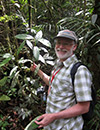 |
Dr. Michael Donoghue - 2014
Dr. Donoghue is a world-renowned botanist and a tireless champion of phylogenetics, evolution, and biodiversity research. He is an elected Fellow of the National Academy of Sciences (2005) and the American Academy of Arts and Sciences (2008), and most recently was awarded the prestigious Dahlgren Prize in Botany from the Royal Physiographic Society of Sweden (2011). Donoghue has consistently been ahead of his time—an intellectual leader in the development of new theory and approaches in systematics, species concepts, character evolution, historical biogeography, lineage diversification, and phylogenetic nomenclature. His ideas are always provocative; he has consistently rocked the boat, inspired debate, and moved all of us toward more rigorous thought.
His prodigious research career (he has published hundreds of papers) is matched by his inspired, continual service to our community, including many years in the Directorships of the Harvard University Herbaria and the Yale Peabody Museum. He has also trained and mentored dozens of students and post-doctoral associates, many of whom are now leaders themselves. All of his nomination letters make special note of how naturally Michael inspires his colleagues—and the botanical community at large—with his ideas and creativity, his enthusiasm, and his enormous generosity.
|
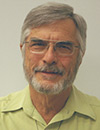 |
Dr. James Doyle - 2014
Professor James A. (Jim) Doyle is recognized for his many distinguished contributions to paleobotany, particularly palynology, and to the understanding of angiosperm phylogeny. Doyle and his associates demonstrated that, worldwide, the Cretaceous fossil record shows the primary adaptive radiation events of early angiosperm evolution. One of his most valuable insights, derived from both cladistic analysis and stratigraphy, was the observation that angiosperms with tricolpate and tricolpate-derived pollen corresponded to a clade of angiosperms that included the vast majority of living flowering plants. The existence of such a clade, the eudicots, has subsequently been strongly supported by molecular analyses and the concept has made its way into modern botany and biology textbooks. Throughout his career and continuing into retirement, Prof. Doyle has shown himself to be an outstanding and inspiring teacher, at both the undergraduate and graduate level. His lectures are meticulously organized, expertly delivered, and focused on principals yet packed with details. His quirky sense of humor emerges and students are left amazed by how much they learned. Prof. Doyle trained nine graduate students over his career, and mentored innumerable other graduate students, postdocs, and faculty colleagues.
|
 |
Dr. Jeff Doyle - 2014
Dr. Jeffrey Doyle is an internationally recognized leader in the fields of theoretical and phylogenetic plant molecular systematics and molecular evolution. Over the past several decades he has consistently been at the forefront of the field of molecular plant systematics, contributing not only innovative methods, but also conceptual advances, as well as new empirical findings that have led to an improved understanding of plant diversity. One letter writer notes that Dr. Doyle has “an astonishing…record of insightful and sustained scientific achievement and has an immense impact on the direction of our field.” Dr. Doyle has made major contributions to clarifying evolutionary relationships among the legumes, the evolution of nodulation and also on the significance of polyploidy. Importantly, one letter writer notes that Dr. Doyle’s “commitment to undergraduate education is every bit as impressive as his research and scholarship.” Jeff was not only an effective undergraduate teacher but also held a major administrative position at Cornell, Director of the Office of Undergraduate Biology.
|
|
|
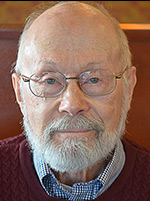 |
Dr. Charles Beck - 2013
Dr. Charles Beck is a distinguished paleontologist who has made remarkable discoveries in the history of land plants. He discovered that the fern-like leaves of the genus Archaeopteris were in fact borne on a tree (Callixylon) with the anatomy of a gymnosperm. This supported the viewpoint that seed plants were derived from free-sporing plants, and led to the identification of the progymnosperms, a group now included with gymnosperms and angiosperms in the larger clade, the lignophytes. One of the people who nominated Dr. Beck for the award quoted Henry Andrews in saying that this discovery “blazed a rough trail through a dark forest where no recognizable path existed before.” In addition, Dr. Beck is a skilled anatomist. After he “retired” from his position as Professor of Botany at the University of Michigan, he continued research. In addition, he wrote a textbook, An introduction to plant structure and development, now in its second edition. Dr. Beck has also served as Chair of his department, Director of the Museum of Paleontology, and as President of the International Organization of Paleobotany, and as Chair of the Paleobotanical Section of the BSA.
|
 |
Dr. Pat Herendeen - 2013
By linking paleontology and neontology, Dr. Patrick Herendeen, Co-Director of the Division of Plant Science and Conservation at the Chicago Botanic Garden, has made significant contributions to our understanding of the evolutionary history of the angiosperms, particularly the Leguminosae. He has edited three symposium volumes on the family, in addition to producing a steady stream of careful publications on fossil and extant legumes. In addition to his steady productive research, Dr. Herendeen has developed a truly remarkable career of service to the field of botany. He has been chair of the Paleobotanical Section of BSA, Editor of the Bibliography of American Paleobotany, and chair of the BSA Publications Committee. For four years he was Managing Editor of Systematic Botany, and another four years as Editor-in-Chief. He took over the editorship at a time when the journal was facing considerable challenges; his efforts to steer the journal to calmer waters were largely behind the scenes but ultimately completely successful. Most recently he has become Editor-in-Chief of the International Journal of Plant Sciences. In addition, he is in his second term as Program Chair for the ASPT and Systematics Section of BSA, a group that constitutes nearly half the attendees at the annual botany conference each year; thus Pat’s efforts are seen every summer in the success of the annual meeting. As one of his nominators noted, “…there can be few active and well-respected plant scientists who have given as much service to the Botanical Society of America and to the broader botanical community…”
|
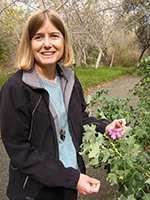 |
Dr. Lucinda McDade - 2013
Dr. Lucinda McDade is a scholar, teacher, and leader of scientific institutions. She is currently Director of Research at the Rancho Santa Ana Botanic Garden, where she has also recently been appointed Executive Director of the Institution. At RSA she also oversees the herbarium, a post that she previously held at the University of Arizona and at the Academy of Natural Sciences in Philadelphia. At all three institutions, her energy and dedication were effective in modernization and development of the collections. At the Academy of Natural Sciences, Dr. McDade was a major force in rehousing the herbarium, thereby securing the collections for generations to come. Dr .McDade has published on a wide range of topics but may be best known for her work on detecting hybridization in phylogenetic analysis, and for her career of studying the systematics of Acanthaceae. Her research is noted for its care and rigor. She has also had considerable impact as an educator. For seven years, she was Scientific Coordinator for the Organization for Tropical Studies and as such coordinated the educational programs in Costa Rica. In addition, she has taught extensively at the undergraduate and graduate level throughout her career. In her nomination letter, however, the role that appears again and again is her skill as a mentor to all her colleagues and students. She has provided encouragement and direction. One former student noted that “[i]t is Lucinda’s generosity that I am left with …” Finally, her service to the community has been extensive and varied, with too many contributions to list in this short space. To quote again from the letter of nomination, “what sets Lucinda apart …. Is her sense of community, and her tireless labor on project that benefit the greater good.”
|
|
|
 |
Dr. Patricia Gensel - 2012
Dr. Gensel, University of North Carolina, is an international leader in the investigation of early land plant evolution. Her research, including rigorous field and laboratory work, has contributed significantly to our understanding of plant diversity at the time when major lineages of land plants were emerging. Through careful morphological and anatomical investigations she has brought “to life” extinct genera of early land plants and improved our understanding of the ecosystems in which these plants participated. She is active as Professor of Botany at the University of North Carolina, where she has taught since 1975 and has encouraged and collaborated with many students and colleagues internationally. Pat served as president of the Botanical Society of America in 2000-2001, during a time of great transition as the society began managing its annual Botany conferences independently of AIBS.
|
|
|
 |
Dr. Walter Judd - 2012
Dr. Judd, University of Florida, Gainesville, is recognized worldwide for his contributions to plant systematics, taxonomy, and phylogenetics. Although he is very well known for his academic achievements, where he has focused on the systematics of the Ericaceae and Melastomataceae, as well as floristics in the southeastern United States and the West Indies, Dr. Judd is also an accomplished teacher, where at the University of Florida, he has been awarded numerous times for his excellence in pedagogy. He also has taught an internationally renowned class in tropical botany for the past 30 years at Fairchild Tropical Botanical Gardens and the Kampong in Miami. Dr. Judd is the lead author of the influential textbook, Plant Systematics: A Phylogenetic Approach, which has been adopted throughout the world as a model for teaching plant systematics and taxonomy. Dr. Judd’s passion for teaching, research, and learning is ever influential to the graduate and undergraduate students he mentors. The 2012 BSA Merit award is a much-deserved honor for Dr. Judd.
|
 |
Dr. Richard Olmstead - 2012
Dr. Olmstead, University of Washington, is recognized for his outstanding contributions to reshaping the field of plant systematics, including his leadership on the use of chloroplast data in phylogenetic inference and angiosperm classification. His doctoral research with Melinda Denton resulted in a monograph of the Scutellaria angustifolia complex (Lamiaceae). His subsequent research on Asteridae has resulted in major realignments in our understanding of family boundaries in Lamiales (especially Lamiaceae and Scrophulariaceae). He has published influential papers on a broad range of issues in systematics.
Dick has guided the careers of numerous undergraduates, graduates, and post-doctoral fellows; fostered extensive collaborative research activities; and made significant service contributions to botanical and systematic societies. The integration of his excellent research program with public outreach activities through the Burke Museum and the University of Washington herbarium serves as a model for how we should be sharing our botanical knowledge to improve the world.
|
 |
Dr. Allison Snow - 2012
Dr. Snow from The Ohio State University is recognized for her outstanding contributions to botanical science in the areas of basic research, education, and professional service. Allison's research on pollination biology, gene flow, and risk assessment of transgenic crops represents significant contributions to the field. She has mentored a number of students and researchers, and has been a strong advocate for communicating the importance of botany to the general public via the media. Finally, Allison has been deeply involved both nationally and internationally in service to a variety of organizations, including the National Academy of Sciences, the World Trade Organization, and as president for the Botanical Society of America.
|
|
|
 |
Dr. Ann Hirsch - 2011
Dr. Hirsch, University of California, Los Angeles, is recognized for her outstanding contributions in the research of plant-microbe interactions, bridging the interactions among genes, plant growth regulators, signal transductions, and microbes. Her research is truly exceptional in combining field aspects of basic research and classical knowledge with molecular aspects, especially in legume-microbe interactions; she has been described as a bold and fearless experimentalist. Ann has also had a long and outstanding record in education where she has set very high standards, and her passion for research has created a stimulating laboratory environment for many undergraduate students, graduate students, post-docs, and visiting scholars to start or pursue careers in science. Dr. Hirsch has excelled in all aspects of her professional life and is richly deserving of the 2011 Merit Award.
|
|
|
 |
Dr. Dennis Stevenson - 2010
Dr. Stevenson is recognized for distinguished contributions in the organization and phylogenetic relationships of cycads and cycad-like plants and is recognized for his breadth of publication, which has included lycopods and ferns, bryophytes and gymnosperms, and monocots and dicots. Guiding the work of doctoral students and post-doctoral researchers, in the evolution of his own career, he has continued to set standards for studies of land plant anatomy and morphology, while increasingly serving as a strong public advocate for our discipline to the public.
His long and productive affiliation with the New York Botanical Garden has communicated the importance of fundamental studies of plants to the community at large.
|
 |
Dr. Darleen De Mason - 2010
Dr. DeMason is recognized for her contributions in plant anatomy, which stress functional and structural aspects of stem thickening in monocotyledons, germination biology of palms, germination problems of the high sugar sweet corn genotypes, and leaf development in pea, elucidating auxin's integrating affect on developmental morphogenesis. A recognized scholar, teacher, academic leader and contributor to the botanical sciences, she has held various BSA posts, including Secretary of BSA and Council Representative and is noted for her volunteer work in improving the botanical environment of Riverside's Victoria Avenue Park. - University of California, Riverside
|
 |
Dr. Nancy Dengler - 2010
Dr. Dengler is recognized for her significant scientific contributions in the areas of the developmental morphology of leaves, the evolution of plant anatomical patterns associated with C4 photosynthesis, and the role of the cell cycle and programmed cell death in plant developmental processes.
Generous as a scientist, colleague and mentor, Nancy is recognized as an excellent plant anatomist with extensive career achievements, including leadership roles as President of the BSA during a time of great transition for the Society. She has encouraged and inspired young botanists on both sides of the border and is among the most prominent of current plant biologists studying leaves. - University of Toronto
|
 |
Dr. Judy Jernstedt - 2010
Dr. Judy Jernstedt is recognized for her careful scholarship providing new insights into morphogenesis and other aspects of development in myriad vascular plant systems. Examining such diverse systems as rhizophores, to contractile root development, to cotton fiber production, she has developed techniques to integrate the role of the cytoskeleton in biomechanical patterning of cell expansion and microfibril orientation in cell walls.
In her service to BSA, her role has been transformational for the Society and for the American Journal of Botany. Her influence on botanists through her research, instruction and service are incalculable. - University of California, Davis
|
 |
Dr. Douglas E. Soltis & Dr. Pamela S. Soltis - 2010
Drs. Douglas E. and Pamela S. Soltis are recognized for their far-reaching influence on many different sub-disciplines within the botanical sciences. Deeply involved with the field of molecular systematics since its infancy, they paved the way for such ambitious projects such as the National Science Foundation's Deep Time and Tree of Life projects contributing greatly to the understanding of floral evolutionary development, particularly in the basal angiosperms.
Their prodigious research productivity has not limited their service activities, however, as both Doug and Pam have served in leadership positions and as Presidents of BSA. Either would be outstanding in their own right, but together as frequent co-authors and collaborators, they continue to mentor and influence a generation of evolutionary scientists in resolving longstanding questions of angiosperm phylogeny.
|
|
|
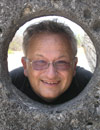 |
Dr. Norm Ellstrand - 2009
The Botanical Society of America recognizes Dr. Norman C. Ellstrand with the Merit Award for his studies on plant population genetics; Ellstrand is one of the country's foremost experts on plant gene flow, the movement of genes from one organism to another. His research has involved the study of the possibility of escape of genes from genetically engineered crops into their wild relatives as well as the potential consequences of that escape.
Ellstrand's work has shown that crops can mate with their wild relatives at rates and distances much higher than previously supposed. He also has shown that the hybrids are often more fit than suspected, suggesting that once transgenes occur in hybrids they will spread readily. Ellstrand has warned that if transgenes confer an advantage to a weed, such as herbicide resistance, that weed will become more difficult to control.
His recent research has come to focus on the evolution of invasiveness in plants. He was among the first to suggest that invasive species could evolve from relatively innocuous progenitors. Ellstrand is the author of more than 100 peer-reviewed research papers and of the influential book Dangerous Liaisons? When Cultivated Plants Mate with Their Wild Relatives. Norman Ellstrand is richly deserving of the Merit Award, the highest award of the Botanical Society of America.
|
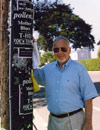 |
Dr. Alan Graham - 2009
The Botanical Society of America recognizes Dr. Alan K. Graham with the Merit Award for his lifetime of perceptive and careful study, by which Graham has laid the foundations for our "concepts about the origins and history of tropical vegetation" in the Western Hemisphere during the past 75 million years. Encouraging numerous students and colleagues for several decades, he has greatly advanced the field of vegetation history, the basis of our understanding the past migrations of plants and animals in North and South America, their evolution, and the way in which we should understand their present distributions. For his life's works, the Botanical Society of America awards Dr. Alan Graham with its highest award.
|
| |
|
 |
Dr. Gar Rothwell - 2009
The Botanical Society of America recognizes Professor Gar W. Rothwell with the Merit Award because he has demonstrated a level of professional commitment and accomplishment that we all strive to attain. He is a world-class scholar as judged by his peers, an effective and persuasive teacher as judged by his University and students, and an active and convincing advocate for the plant sciences as judged by the scientific community. As noted by one of his peers: Rothwell's "work with fossil ferns of many types…helped to more accurately define the three major radiations of true ferns and to sharpen the focus when molecular clade estimates and phylogenetic analyses based only on molecular data conflicted with each other." These individual, but highly intertwined activities in his career have been carried out at the highest level of professionalism and with a sense of purpose that is rarely matched. "Scholar, teacher, and extraordinary professional citizen" for the plant sciences underlines the distinguished career of Gar W. Rothwell, who so richly deserves the BSA's Merit Award.
|
 |
Dr. Marsh Sundberg - 2009
Professor Marshall D. Sundberg has demonstrated excellence in basic research, education, and exceptional service to the professional botanical community. His studies on the morphology of teosinte and its relatives are considered stellar contributions. Sundberg has made many valuable contributions to the Society, especially to the teaching section (vice-chair, program chair and workshop and section chair for many years) and as chair of the committee which revised and expanded the valuable 1995 booklet, Careers in Botany. This small booklet with large outreach for our society and for educators provided the resources to help students and professionals alike to understand the importance of a botanical education and how they could apply it to their life's work. Professor Sundberg has also chaired the Society's Education Committee, Membership and Appraisal Committee and assumed editorial responsibility for the Plant Science Bulletin. As the current editor of our Bulletin, established in the 1950's as a vehicle for disseminating information for our colleagues in the Plant Sciences, Marsh has surpassed this goal with his choice of subject matter, editorial insights and innovative reports. Marshall Sundberg is a notable public ambassador, speaker, researcher and advocate for plant biology at state, national, and international venues. Marshall Sundberg has earned the Botanical Society of America Merit Award, the highest honor our society can bestow on a colleague who has made outstanding contributions to botanical science and dedicated his career to our profession.
|
|
|
 |
Dr. Thomas Rost - 2008
Dr. Thomas L. Rost is one of the world’s foremost researchers on root development. His research record spans four decades and includes more than 140 published papers in highly regarded journals, with 82 on root structure and development, plus 10 co-authored and co-edited books. These studies have laid down the foundations for understanding of root apical growth, especially involving cell cycle control and meristem function, lateral root production, root differentiation, epidermis and rootcap development, and root meristem structure in an evolutionary context. Tom’s papers have corrected the misconceptions about Arabidopsis that have dominated the previous 15 years of research on that model plant for developmental and molecular studies. He has led his students and post-doctoral researchers to a modern and accurate understanding of the development of this model root system. Specifically, he and his colleagues have shown that the architecture of the root apical meristem changes as the meristem ages. Also of particular importance, he has shown that the pattern of root apical meristem ontogeny is associated with periclinal divisions and gives rise to a three-dimensional arrangement of periclinal derivatives arranged in a helix.
Further, Tom has gone beyond Arabidopsis to put it in the context of root organization in angiosperms, especially dicotyledons, as a whole. Tom’s research on root apical meristems of a broad range of species (Azolla, pea, maize, cotton) have provided an important framework for understanding the streamlined structure of Arabidopsis roots. He has enabled his group to make unique contributions to understanding the structure and development of this genetic model organism. Tom Rost has done more than any other current structural botanist to bring the plant root to our attention as a dynamic developmental entity. However, his research has not been limited to roots. He has authored or co-authored impressive articles regarding seed structure and histochemistry, plant morphogenesis, and agriculture, and especially the recent studies on Pierce’s disease in grapevine. Further, Tom’s contributions to botanical education via his teaching/mentoring and his writings have been quite well known and recognized. With great pleasure, the Botanical Society of America is proud to recognize Dr. Thomas L. Rost with this highest award.
|
 |
Dr. Warren Wagner - 2008
The botanical community is indebted to Dr. Warren L. Wagner for his major contributions: monography of Oenothera, The Manual of the Flowering Plants of Hawaii, studies on speciation and relationships of Marquesan plants, and service at the National Museum of Natural History (Smithsonian Institution) are among those that will be most remembered. Born January 8, 1950 (Las Cruces, New Mexico), Warren early showed the enthusiasm for the New Mexico landscape. His work on Oenothera for his doctorate (1981) was at Washington University, St. Louis (Peter Raven, advisor). In 1982, he undertook what was probably one of the most difficult and at the same time, the most needed contribution in floristic botany: a flora of Hawaii. The previous flora (Hillebrand, 1888) was out of date, and subsequent contributions featured varied species concepts and were published in scattered places. The 1990 Manual (rev. 1999) was a major factor in permitting botanists to explore the amazing insular evolutionary phenomena that the Hawaiian flora contains. Wagner’s work on islands continued with the Marquesas, where cladistic studies and contributions using DNA permitted an understanding of the biogeographic nature of the remote and neglected archipelago. Wagner is both imaginative and practical, and has served as Chair of Botany at the Smithsonian, managed funds for IAPT and ASPT, and served in numerous capacities for professional societies. Moreover, his genial presence, encouragement, and knowledge have helped advance the careers of younger scientists. Thus, his identity in monographic, floristic, and phylogenetic botany has been multiplied significantly.
|
|
|
 |
Dr. Bruce Baldwin - 2007
Dr. Bruce Baldwin is recognized for his contributions in plant systematics. Beginning in graduate school, Dr. Baldwin studied one of the icons of island biogeography, the Hawaiian Silversword Alliance. His dissertation work using chloroplast DNA was one of the pioneers on island plant groups and confirmed that this morphologically diverse group represented a single colonization event from ancestors in North America. Baldwin reconfirmed these results using nuclear genes, the internal transcribed spacer (ITS) region. His development of ITS for plant phylogenetic study is perhaps his most widely recognized contribution. Less well-known outside of California is that Dr. Baldwin has made major contributions to plant floristics, through his efforts editing the Jepson Desert Manual and the 2nd edition of the Jepson Manual of California plants. For his many contributions to the systematics of Asteraceae, Hawaiian plant biogeography and evolution, and advances in molecular systematics, the BSA is pleased to recognize Dr. Bruce Baldwin with its highest award.
|
 |
Dr. William Crepet - 2007
Dr. William Crepet is recognized for his contributions in paleobotany, especially the reproductive structures of seed plants. Dr. Crepet's early work on interpreting the development of Cycadeoidea reproductive structure led to a better understanding of the enigmatic fossil group Bennettitales. However, for many, his most important contributions come from his ability to connect fossil and extant plants through phylogenetic study. This is especially true for his contributions to knowledge about fossil angiosperm floral structure, particularly ancient pollination syndromes and their role in flowering plant diversification. For his many contributions to paleobotany and plant phylogeny, the BSA takes pride in recognizing Dr. William Crepet with its highest award.
|
 |
Dr. Edith Taylor - 2007
Dr. Edith Taylor is recognized for her contributions in paleobotany. Her work has focused on the structure and evolution of fossil plants. Her detailed investigations have permitted the interpretation of functional and ecological aspects of plants, including phloem development, plant/insect interactions, and tree growth and adaptation to high latitudes. For over two decades she has brought to light the diversity of plants once living in present day Antarctica. The wealth of information from these studies has shed light on plant diversity at high latitudes in the southern hemisphere, plant biogeography and evolution, and climate history. For her many contributions to paleobotany, Antarctic paleoclimatology, and the biology and evolution of fossil plants, the BSA is delighted to recognize Dr. Edith Taylor with its highest award.
|
|
|
 |
Dr. Ruth Stockey - 2006
Dr. Ruth Stockey is recognized for her contributions to paleobotany, especially to our understanding of the anatomy and development of fossil conifers and angiosperms. Dr. Stockey has been a member of the Botanical Society of America for more than 30 years. She began her research career elucidating the structure and development of fossil conifers and is recognized as the world's expert in this area. Since moving to the University of Alberta, she has concentrated on anatomically preserved fossil angiosperms, providing data on floral structure, development, and phylogeny in these ancient plants. Her research has been supported by the Natural Sciences and Engineering Research Council (NSERC) of Canada for more than 26 years. Dr. Stockey is truly an "ambassador of botany" and is involved in collaborative work with colleagues around the world; her letters of support came from five countries! She is an enthusiastic teacher and her support and training of students is exceptional--one student began research in her laboratory in high school, and received her Ph.D. this year. For her many contributions to paleobotany, including her dedication to training the next generation of botanists, the BSA is proud to recognize Dr. Ruth A. Stockey with its highest award.
|
 |
Dr. Barbara Webster - 2006
Dr. Barbara Webster is recognized for her many contributions to plant development and structure. Her early work focused on abscission and senescence in higher plants, and included anatomy, ultrastructure, histochemistry, and physiology, as well as experimental work, especially on the genus Phaseolus. Beginning in the 1970s, Dr. Webster began to concentrate more on reproductive biology, but she has contributed to a wide range of topics, including nitrogen fixation in the legumes, environmental stress, and yield of crop plants. Her impressive publishing career spans more than five decades and includes more than 100 published papers and book chapters; her research has been supported by the National Science Foundation, the USDA and USAID. Dr. Webster was truly a pioneer in advocating for increased participation of women and minorities in science, and has served as a role model and mentor to both undergraduate and graduate students in plant biology. She is a fellow of the American Association for the Advancement of Science and the American Society for Horticultural Science, served as Treasurer and President of the Botanical Society of America, and has served as Associate Vice-Chancellor for Research at the University of California, Davis since 1989. As one letter writer noted, "It is hard to believe that Barbara has not already received this award." For her numerous contributions in many arenas to the field of botany, the BSA is proud to recognize Dr. Barbara D. Webster with its highest award.
|
|
|
 |
Dr. Scott D. Russell - 2005
Dr. Scott Russell’s career has been devoted to understanding the morphological, physiological, and developmental aspects of double fertilization in plants, and in particular the structure and behavior of sperm cells during reproduction. Dr. Russell has explored this question using approaches ranging from descriptive works to experimental studies, resulting in over 100 scientific publications. His contributions have reshaped this field and have stimulated research in plant anatomy and morphology for a generation of botanists.
One of his most significant findings is that plant sperm from a single pollen grain are dimorphic, with dissimilar complements of organelles, and that this dimorphism leads to a predictable pattern of fertilization. His research has led to major advances in our understanding of key processes in sexual plant reproduction such as double fertilization and the maternal inheritance of organelles. Dr. Russell also continues to enhance public awareness of botany through his teaching and his informative website.
While the BSA Merit Award to Dr. Russell is based on his significant contributions to botanical science, he also has given generously of his time to the Botanical Society of America, serving as President, Webmaster, and longtime member of the Executive Committee, among other offices. Dr. Russell is most definitely a technically skilled, forward-thinking scholar who has made a lasting mark on botanical science and on the Botanical Society of America. In recognition of his myriad accomplishments, the BSA is proud to present him with a Merit Award.
|
|
|
 |
Harry (Jack) T. Horner - 2004
Dr. Horner’s research has primarily focused on the cytology and development of anthers and pollen and on calcium oxalate crystal formation in plants. His research has been innovative, ground-breaking, and sustained. Over the past 43 years, he has published or has in press 110 papers in 43 high-quality refereed journals. His work is described by peers as “meticulous,” “pioneering and outstanding,” and “carefully documented.” His work calls on multiple tools and approaches, is often collaborative and interdisciplinary, and has earned him an international reputation as one of the most eminent specialists worldwide on plant ultrastructure. An indication of his stature as a researcher is invitations to three Gordon Conferences on calcium oxalate, for one of which he was chair and another vice-chair.
His “heroic service” and numerous contributions to BSA over many years are greatly appreciated. Through his participation on committees, as Chair of the Financial Advisory Board, and in elected office (two terms as Treasurer and President), he has been an agent of many positive changes in our Society. He has also served his department and Iowa State University as Director of the Bessey Microscopy Facility for 34 years, in administrative positions, and on numerous committees. He served as President of the Iowa Academy of Science. He has reviewed manuscripts for about 30 journals.
Along with this impressive research productivity and service, Dr. Horner has been a dedicated and effective teacher. He has taught three different courses on microscopy each for over 20 years and up to the present, and his teaching of microscopy techniques is renowned. He has successfully advised 13 M.S. students and eight Ph.D. students. Many of his students have gone on to highly successful careers, indications of the solid training and mentoring he gave them. He has served on well over 100 graduate student advisory committees in 21 different programs at ISU or elsewhere.
It is not surprising that his numerous accomplishments have brought him many awards, including a Special Award for long-standing continuous service to the Botanical Society of America, a Centennial Citation and Distinguished Service Award from the Iowa Academy of Science, and the highest award at ISU, a University Professorship.
One of the best measures of one’s reputation is recognition by peers. Hence from the supporters of Dr. Horner’s nomination we hear that he maintains “the highest standards of performance imaginable,” that he is a “model of clarity and rigorous scholarship,” as well as “an exemplary scholar and citizen–and a good guy.”
|
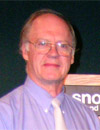 |
James L. Seago, Jr. - 2004
This award is in recognition of the tremendous contributions Dr. Seago has made in encouraging and supporting students to pursue careers in botany. Dr.Seago has spent the majority of his career at the State University of New York, Oswego, a primarily undergraduate institution where the faculty carry heavy teaching responsibilities. Despite this, he has maintained an active research program involving undergraduate students and has mentored many of them to continue to graduate school in botany. It is primarily for his mentoring of undergraduates that we recommend Dr. Seago for this award.
If students do not enter botany, the field will wither away. Attracting students into botany may not advance one’s career as publications and grants do, but without a steady flow of new students, and especially students who are bright and interested, into botanical graduate programs, all botanists will have increasing difficulty publishing and obtaining funding. Dr. Seago has made remarkable and long-standing contributions to the flow of students into our discipline. He has the ability to spot interest and aptitude, to involve students in research, and thus to nurture their ability and interest. He has fostered student attendance at professional meetings and their presentation of papers at these meetings, and he has co-authored papers with students. In more than half of the past 30 years, Dr. Seago has coauthored a presentation or a paper with a student.
One colleague noted that “Jim obviously works closely with the students in planning the research and in helping prepare the talk, and the results are clear to all. Jim’s students know their stuff and are well prepared to present their work in the most professional and effective manner.” One colleague summarized Dr. Seago’s mentoring of students as an “unrivaled, significant, and persistent commitment toward fostering undergraduate botanical research over the last 30 years.”
Dr. Seago has encouraged many students to pursue careers in botany by actively promoting their applications to graduate schools. His matching of students with graduate programs that are right for them has not only benefitted the students but also the programs and ultimately plant sciences.
Dr. Seago has served his profession and his home institution in many important ways in addition to bringing students into botany. He was department chair for six years and has served on numerous committees at SUNY Oswego. He has served the Botanical Society of America as Program Director of the Developmental and Structural Section (1994-1997) and has been a diligent and hard-working reviewer for the American Journal of Botany.
Dr. Seago’s research deals with root developmental anatomy as well as the structure, development, and function of aquatic and wetlands plants. One colleague notes that “When one thinks of plants and roots, one must think of Jim Seago.” He has published 14 papers in refereed journals (nine papers in the American Journal of Botany) and has one in press. His research program, while modest in terms of number of publications and grant support, is admired by colleagues who describe it as “solid and substantial,” and “solid scholarly contributions.”
For his outstanding contributions to botanical science, and especially for being, as a colleague observed, the “vibrant, enthusiastic teacher and researcher” that he is, Jim Seago is unquestionably deserving of the Botanical Society of America’s highest honor.
|
|
|
 |
Spencer C.H. Barrett - 2003
For his myriad contributions to reproductive biology, plant breeding systems and aquatic ecology. He established heterostyly as a model system in reproduction, contributed to understanding of the evolutionary modification of floral development, genetic structure of populations, the role of incompatibility in the breeding systems of natural populations, the evolution of dioecy and the influence of gender ratio in determining plant breeding systems. In addition to his service as Associate Editor and Book Review Editor of the American Journal of Botany, he mentored a generation of plant biologists, including 2 Master's students, 9 Ph.D. students and 6 postdoctoral associates who have occupied faculty positions.
|
 |
Jack B. Fisher - 2003
The 30 years of contributions made to botany by Dr. Fisher have been broad, deep, original, and patient. He has carefully combined anatomical, developmental, physiological, and ecological considerations, to show how tropical plants grow and adapt. He has made critical contributions to our understanding of water transport in lianas and fundamental discoveries on the developmental basis of tropical tree geometry. In the same way that he has waited patiently for tree seedlings to mature and yield their anatomical secrets, he has worked for 20 years to forge alliances between Fairchild Botanical Garden and institutions of higher learning to promote education of the next generation of comparative botanists. Dr. Fisher has benefited botany through his research and his thoughtful outreach and he richly deserves recognition through a BSA Merit Award for these admirable accomplishments.
|
 |
Leslie G. Hickok - 2003
Dr. Hickok has made a career out of defying the odds and generating surprises. While others were intimidated by the high chromosome numbers of ferns, he showed that valuable insights into polyploidy and speciation could be obtained by studying their cytogenetics. While the mainstream focused attention on Arabidopsis as a plant model system, Hickok promoted the unique properties of the fern Ceratopteris. His pioneering work on selection and mutation using this model demonstrated the power of a system that separated gametophytic and sporophytic life stages. More recently, he has succeeded in marrying his deep commitment to advancing botanical knowledge and his desire to provide meaningful, enriching experiences for biology students. Through his insight and perseverance, he transformed Ceratopteris into C-fern, and now over 60,000 students per year are learning about plant genetics using this inexpensive but effective teaching system. Dr. Hickok is a distinguished scholar whose research and teaching efforts at all levels from K-12 to international seminars can be characterized as groundbreaking, inspirational, dedicated, and unselfish. For his outstanding contributions and longstanding generosity, the BSA is pleased to present a Merit Award to Dr. Leslie G. Hickok.
|
|
Jeffrey D. Palmer - 2003
Dr. Palmer has excelled in his contributions to botanical science. His astonishing research productivity has resulted in over 200 scientific papers, many of them published in the most prestigious scientific journals. Dr. Palmer has fundamentally transformed the scientific landscape we now operate in through his legendary contributions to phylogenetics and gene and genome evolution. He has arguably been the most influential person in the development of the field of molecular systematics of plants and has been directly responsible for the paradigm shift in our current views of evolutionary relationships among eukaryotes, including higher plants. Other major contributions from his laboratory include the characterization and evolution of introns and plant mitochondrial genomes, the evolution of plastid genes in non-photosynthetic plants, and the origin and evolution of chloroplasts. The list of the graduate students and post-docs trained in his laboratory reads like a who's who of botanical science. His collaborative approach and willingness to share data has built a sense of community among plant molecular phylogenetics workers unparalleled in other fields of organismal biology. At the same time, Dr. Palmer has generously served as department chair at Indiana University as well as on review panels and editorial boards and has promoted outreach through his many public presentations. For his innovative and productive scientific contributions, Dr. Palmer has received many awards, among them the Wilhelmine Key Award from the American Genetic Association, election to the American Academy of Arts and Sciences and the U.S. National Academy of Sciences, and an ISI Highly Cited Award for the top 15 most cited plant and animal scientists. In honor of his extraordinary accomplishments, the BSA is proud to present him with a Merit Award.
|
|
|

 |
Carol C. & Jerry M. Baskin - 2001
We were impressed by their extensive contributions to the field of seed ecology, each having about 300 articles and other important publications. Their lab is the only one in the world that has been able to maintain a research focus on seed ecology for such a long time, since the mid-1960s.
The Baskins have also written a highly-praised book, "Seeds-Ecology, Biogeography, and Evolution of Dormancy and Germination, published in 1998 by Academic Press. An exerpt from one review of this book states " Carol and Jerry Baskin bring many years of seed germination experience with a wide array of species to what is an inspiring work. They interweave their own studies of numerous temperate North American species with those done by others world-wide. To provide some idea of scope, individual chapters contain hundreds of references, with two chapters each having more than a thousand. Just as the number of studies presented is extensive, so too is the number of species. Nearly 6400 are listed in the taxonomic index! These species provide a substantive base for the concluding discussion of biogeographic and evolutionary aspects of seed dormancy and germination. We are indebted to the Baskins' for their fine contribution, surely a labor of love, to the seed literature."
Proponents also cite Carol and Jerry Baskin's generous service to the Botanical Society of America and other societies, on editorial boards, and in helping undergraduate and graduate students. They have been an inspiration to their own students and colleagues worldwide as exceptionally kind and tolerant people.
|
|
|
|
Leslie Gottlieb - 2000
Dr. Leslie Gottlieb has had a profound impact on the direction of plant systematics and has been one of the most influential plant evolutionary biologists over the past several decades. His 1977 paper in the Annals of the Missouri Botanical Garden, laid the foundation for the intelligent application of allozyme data in plant systematics. His 1982 paper in Science is a classic study of the duplication and conservation of isozyme loci in plants. His 1984 paper in the American Naturalist has been called one the most important papers in plant evolutionary biology during the past half century. However, his greatest contribution may have come through his influence on the careers and research of a substantial number of plant evolutionary biologists, including many of the people most active in this field today. Despite the fact that his research has often been more genetic or molecular in nature, Leslie has remained a botanist at heart.
|
|
|
 |
Daniel J. Crawford - 1999
A role model in botany, combining service to plant science and a productive research program. Prof. Crawford's service to the profession has covered an impressive span of over 30 years, with some 23 years as an officer, committee member, and most recently, president in 1996. He received the Alston Award for the best paper in the Phytochemical section in 1983. He has been very active with the NSF, with the International Organization of Plant Biosystematists, has provided frequent service as a member of editorial and review bodies, and as a cornerstone of the American Society of Plant Taxonomists. He served the ASPT as President in 1988, and received their most prestigious award, the Asa Gray Award, in 1997. His research record is prodigious, with over 150 research articles. His passionate dedication to botanical research marks him as one of the leading systematic botanists/evolutionists of our time. He made great contributions to understanding macroevolutionary trends in plants and played a major role in the development of molecular systematics, in particular with the publication of the book, Plant Molecular Systematics. Through it all he has kept his focus on the key scientific questions, not on techniques. He has trained 19 graduate students. He exemplifies impeccable scientific ethics while maintaining a genuinely warm and considerate personality. He embodies the award criteria "...to have made outstanding contributions to botanical science."
|
 |
Barbara Schaal - 1999
A long and distinguished record of excellence in research, service, and teaching. Dr. Schaal has made many outstanding contributions in over 80 publications to a variety of botanical disciplines, including population genetics, systematics, ecology, conservation biology, and economic botany. She is perhaps best known for her ability to apply new molecular methods to interesting and important questions. Her studies of ecological genetics and genetic divergence in domesticated plants are especially noteworthy. Furthermore, she has trained 12 Ph.D. students, and hosted many postdoctoral and visiting scientists in her laboratory. Her service to professional societies is truly exceptional, including the presidency of BSA. As BSA President, she was a leader in the best sense of the word; she inspired others to contribute, and earned respect because she had a clear vision of her goals, and articulated them lucidly. She has also served as Executive Vice President of the Society for the Study of Evolution, on the Editorial Boards of three journals (Molecular Ecology, Functional Ecology, and Molecular Biology and Evolution), and on several NSF panels, while also serving as Chair of the Biology Department at Washington University, and most recently was elected to the National Academy of Sciences. Dr. Schaal is widely viewed as one of the most eminent of the Botanical Society of America, and has been the role model for many in the classroom and in her profession.
|
|
Tod Stuessy - 1999
A productive and influential botanist with particular impact in plant systematics. His contributions include monographic studies in the Asteraceae, very early promotion of the burgeoning field of cladistics, strong advocacy for collections, and insights into the origin and evolution of island plants. He is a consummate internationalist, with huge influence in South America, Asia, and now Europe. His mastery of Spanish, and clear understanding and sensitivity for Latin American cultures, close ties with scientists, and various agencies has led to a multitude of collaborations and prodigious productivity—with over 200 publications including seven edited or single authored books. The highlight of the latter was his 1990 book, Plant Taxonomy: The Systematic Evaluation of Comparative Data, winner of the prestigious Henry Allan Gleason Award. He has trained 18 graduate students. His service to professional societies is exemplary. His presidency of the American Society of Plant Taxonomists was marked by perhaps the greatest number of initiatives in the past three decades. He has also served the NSF as a program director, held multiple offices in the Association of Systematics Collections and the BSA, and worked tirelessly to promote botany at the local level though the Ohio Academy of Science. He has been honored by selection as a fellow of the Linnean Society of London, and by the AAAS. During his 30 year career, he made extraordinary contributions to botany.
|
|
|
|
Margaret B. Davis - 1998
For her fundamental contributions in quantifying modem and fossil pollen abundances and relating them to existing and past vegetations, the essential starting point for broader scale analyses using proxy data sources in the quantitative reconstructions of past climates. Insights gained from such reconstructions have challenged and changed assumptions of neo-ecologists and have been critical in discussions of possible patterns of vegetation change in the wake of global climate, change.
|
|
Paul B. Green - 1998
For his innovative, technically brilliant and analytically fundamental work on plant morphogenesis; for the first direct measurements of cell turgor pressure and the quantitative description of the importance of wall theology in governing growth rates in Nitella; for microscopic studies of the initiation and early growth of leaves and flowers; for elucidating the bioengineering principles underlying phyllotactic pattern; for his eloquent, good-humored, inspired, and inspiring presentations that have linked the communities interested in developmental and theoretical biology.
|
 |
Dominick Paolillo - 1998
For his innovative and scholarly research on the developmental anatomy of Isoetes; for his visualization of the three-dimensional arrangement of the lamellar components of the higher plant chloroplast; for his detailed and comprehensive studies of moss sporogenesis, spermatogenesis and the release of sperms, the developmental analyses of the growth of moss sporophytes and the expansion of their capsules; for his revisionist insights into Onoclea male sexuality and photobiology; and for his continuing contribution to the effects of dwarfing genes on the development of wheat.
|
 |
Edward L. Schneider - 1998
For his skill as a researcher in vascular plant anatomy, as a teacher of plant sciences, and as a botanical administrator. Edward L. Schneider has inspired cooperation, enterprise, and excellence at the institutions he has served.
|
|
|
 |
Nels Lersten - 1997
|
|
Elbert Little - 1997
|
 |
Grady Webster - 1997
|
|
|
|
Hugh H. Iltis - 1996
Distinguished botanist, for his research on the evolution of Zea mays and the systematics of Capparaceae, for his strong concern for the next generation of botanists in the U.S. and Mexico, for his extensive botanical field work and development of the University of Wisconsin herbarium, and for his devotion and tireless commitment to the preservation of biological resources.
|
 |
Karl J. Niklas - 1996
For his innovative and scholarly research on the paleobiochemistry of vascular and non-vascular fossil plants, for his almost single-handed development of the field of biomechanics, in particular the aerodynamics of wind pollination in extinct and extent seed plants, for his skilled communication of research findings, for being unfailingly helpful to his colleagues, for his talent as an award winning teacher, and for his service to the Botanical Society of America on several committees and as editor of the American Journal of Botany.
|
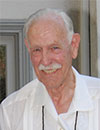 |
Robert F. Thorne - 1996
Internationally renowned giant in the field of plant systematics for landmark contributions in understanding large-scale phylogenetic patterns in flowering plants evolution, for insightful papers in the field of plant geography, most notably those on major disjunctions in seed plants, South African-American plant relationships, Australasian rain forests, major floristic regions of North America and desert vegetation in south-western North America, and as an enthusiastic and inspirational teacher.
|
|
|
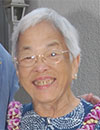 |
Isabella A. Abbott - 1995
The first Hawaiian woman to receive a Ph.D., eminent phycologist, authority on algal diversity along the California coast; and ethnobotanist, authority on traditional use of Hawaiian plants.
|
 |
James E. Canright - 1995
Scholar on the Ranales, his systematic studies of primative angiosperm groups contributed to the understanding of flowering plant evolution and his pioneering work in palynology established the significance of the discipline for both basic and applied research.
|
|
|
 |
Gregory J. Anderson - 1994
Tropical systematist, authority on Solanum and pollination biology, stimulation teacher, dedicated and effective voice of the Botanical Society as Secretary and President, and whole plant biologistin every sense.
|
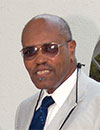 |
Lafayette Frederick - 1994
Prominent educator, mycologist, tireless promoter of students in science, superlative and inspiring teacher for over 40 years, and outstanding role model for students and faculty.
|
|
|
|
Daniel I. Axelrod - 1993
Outstanding paleobotanist and geologist; authority on evolution of paleofloras and the origin of modern vegetation types; expert on palaeoclimates and on changing morphospecies through geological time; author of the theory of tropical highland origin of angiosperms.
|
|
Robert Ornduff - 1993
Inspiring and imaginative scholar and teacher; President of the American Society of Plant Taxonomists and the California Botanical Society; significant contributor to advancing our fundamental understanding of the reproductive biology and systematics of plants.
|
|
|
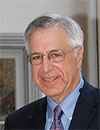 |
W. Hardy Eshbaugh - 1992
Inspiring and caring teacher, dedicated researcher, able administrator, president of the American Society of Plant Taxonomists, the Botanical Society of America, and the Society of Economic Botany, and champion of the science of botany.
|
|
Raymond Carl Jackson - 1992
Outstanding contributor to cytogenetics, particularly to our understanding of polyploidy, discoverer of low chromosome numbers in angiosperms, dedicated teacher, systematist, administrator, and servant of the Botanical Society of America.
|
 |
Beryl B. Simpson - 1992
Distinguished botanist recognized for her research in systematics, biogeography, and pollination biology, for her teaching, for her service to biological societies, including presidencies of the Botanical Society of America and the Society for the Study of Evolution, and as the author of a widely used textbook on economic botany.
|
|
|
 |
David L. Dilcher - 1991
Dedicated researcher who has revolutionized the study of angiosperm fossils and contributed significantly to our understanding of the origin of the angiosperms; inspiring teacher who has given outstanding service to the Botanical Society of America as Program Director, Secretary, and President.
|
 |
Patricia K. Holmgren - 1991
Distinguished botanist who has served the Botanical Society of America as President, Vice President and Secretary, this award recognizes her dedication to the profession of botany as the inestimable Director of the Herbarium of the New York Botanical Garden, and her exemplary conduct as a role model for aspiring young botanists.
|
|
Ian W. Sussex - 1991
Productive scientist whose morphogenetic research extends from the classical to the molecular; devoted and able teacher, mentor of many excellent and influential graduate students; co-author of an outstanding book on plant development; planner of important symposia and conferences; excellent botanical citizen and colleague.
|
|
|
 |
Kenton Chambers - 1990
Eminent biosystematist, internationally recognized for his studies of various genera of Asteraceae; a pioneer in the development of plant conservation in Oregon; stimulating teacher who has inspired many students to become botanists.
|
|
Bassett Maguire - 1990
Author of numerous and outstanding contributions to neotropical botany; explorer and plant collector in the "Lost World" of the Guiana Highlands; prime mover in the creation of the Intermountain Flora. He is the taxonomic authority on the family Clusiaceae.
|
|
Carlos A. Miller - 1990
Effective and dedicated teacher; patient and ingenious experimenter; co-discoverer of the nature of the cytokinins and of their interactions with auxin in the control of morphogenesis; co-author of one of the most cited papers in the field of plant physiology.
|
|
Philip Barry Tomlinson - 1990
A leading authority on plant form and structure, and one of the primary exponents of modern morphology and anatomy, with special emphasis on monocots and woody plants. Barry has served us as a model and an inspiration for investigating many neglected aspects of the botany of the tropics.
|
|
|
|
Joseph A. Ewan - 1989
Historian of American botany and natural history, including Rocky Mountain naturalists and such early figures as Banister, Bartram and Barton; a prolific writer, engaging teacher and sparkling public speaker.
|
|
David E. Fairbrothers - 1989
Eminent taxonomist, authority on New Jersey plants and their history; pioneer and international leader in chemosystematics using protein data to clarify relationships; promoter of the National Pinelands Preserve and consultant to lawmakers of endangered species.
|
|
Arthur R. Kruckeberg - 1989
Pioneer and authority on serpentine endemism; builder of bridges across fields of edaphic ecology, systematics, cytotaxonomy, evolution, conservation and ornamental and native plant horticulture; outstanding teacher.
|
|
Richard W. Pohl - 1989
Premier expert on grasses of temperate and tropical America; inspiring classroom teacher and advisor of many noted agrostology students; botanist whose notoriously wry sense of humor keeps him from being "glumey".
|
 |
Shirley C. Tucker - 1989
Worldwide leader in the use of floral ontogeny to elucidate evolution in many families, most recently the legumes, ardent lichenologist on the side; tireless worker for the Botanical Society as committee member, section officer, Program Director and President.
|
|
|
|
Aubrey Willard Naylor - 1988
Distinguished plant physiologist, author and botanical statesman for 50 years; innovative investigator of mechanisms of action of plant growth regulators, and of amino acid and nucleic acid metabolism.
|
|
Richard Evans Schultes - 1988
World renowned economic botanist, editor, explorer, and inspiring professor; author of definitive works on orchids and rubber, and on hallucinogenic, narcotic and medicinal plants.
|
|
T. Elliot Weier - 1988
Pioneer in chloroplast structure, particularly ultrastructure, lichenologist of note; superb teacher; exceptional mentor of students and teaching assistants; author of widely used texts.
|
|
|
|
Josiah L. Lowe - 1987
Exuberant mycologist, top specialist of polypores with classical monographs on Fomes, Poria, and Tyromyces; fiercely dedicated teacher of botany for fifty years.
|
 |
William Louis Stern - 1987
Erudite systematist in wood anatomy of dicotyledons, keen investigator in biology of orchids, superlative teacher, theorist, curator, editor, leader and trustee.
|
 |
Thomas N. Taylor - 1987
Topnotch teacher, author, administrator; already a worldwide leader in pale-botanical research, ranging from spores to cambium and from U.S.A. to Antarctica.
|
|
|
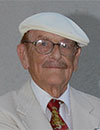 |
Bernard O. Phinney - 1986
Meticulous research in plant physiology and student of the biochemical genetics of hormonal metabolism, he has deciphered the metabolic pathway of gibberellins and made profound contributions to phytoendocrinology.
|
|
John G. Torrey - 1986
Developmental botanist and student of root biology, he has contributed classic works on the origin of vascular patterns, cambium activation, quiescent center, lateral root development, and the symbiosis of the actinomycete Frankia with roots of non-leguminous plants.
|
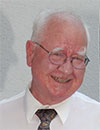 |
Billie L. Turner - 1986
Exuberant champion of plant systematics, pioneer in chemotaxonomy, and critical student and monographer of Compositae and Leguminosae, he has served with distinction as administrator, inspiring teacher of graduate students, and as ubiquitous catalyzer in contemporary botany.
|
|
|
|
Alden S. Crafts - 1985
Renowned plant physiologist and bulwark of botany.
|
 |
Charles Heimsch - 1985
Comparative plant anatomist, national leader in botany, President of the Botanical Society of America, and consummate Editor of the Journal.
|
|
Barbara Palser - 1985
Botanist and plant anatomist of many talents, editor, writer of handbooks, adviser of students, Secretary and President of the Botanical Society of America.
|
| |
Martin Zimmermann - 1985
In appreciation of his singularly imaginative approaches to botany, which spanned artificial boundaries between disciplines and inspired a generation of colleagues to look at the close interdependence of structure, function and development.
|
|
|
 |
Donald R. Kaplan - 1984
A developmental morphologist par excellence, whose detailed investigations and insightful analyses of leaf development have set the standard in the field. - University of California, Berkeley
|
|
Theodore T. Kozlowski - 1984
A distinguished forest physiologist whose contributions to our understanding of tree growth are unsurpassed. His studies of water movement are classics as are his investigations of the mobilization and utilization of photosynithates and seed reserves. - University of Wisconsin
|
|
Rolla M. Tryon - 1984
Who is preeminently knowledgeable in matters of taxonomy and nomenclature. This foremost pteriodologist is a perceptive student of phytogeography and of the evolutionary impact of the selective process during plant migration. - Harvard University
|
|
|
|
Harold A. Mooney - 1983
In recognition of his efforts linking plant ecology and plant physiology; for his contributions to increasing our understanding of carbon balance, photosynthesis, and water relations of native, plants. - Stanford Universityb
|
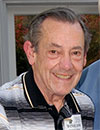 |
Winslow R. Briggs - 1983
For pre-eminence in research ranging from vernation in ferns and hormone transport to the chemistry and biophysics of light-mediated growth of plants. He is researcher, professor and director par excellence. - Carnegie Institution of Washington
|
|
Richard Allen Popham - 1983
In recognition of a long-term student of plant apices, including root, shoot and flower; histologist and anatomist with a penchant for precision; a hard-working and innovative manager of the purse strings of the Society's journal; - for his devotion to his field, to his students and to the Society . - Ohio State University
|
|
|
|
Ralph O. Erickson - 1982
For contributions to our understanding of integrative mechanisms of plant development using mathematical analyses; for introducing the plastochron index for measuring the shoot apical activity and for leadership in developing models allowing computer analysis of pl ant growth. - University of Pennsylvania
|
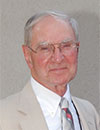 |
Ray F. Evert - 1982
For furthering understanding of ontogeny, structure and seasonal development of phloem; for analyses of leaf structure relative to solute transport and for co- authorship of a population general botany text. - University of Wisconsin, Madison
|
 |
William A. Jensen - 1982
For basic contributions in plant cytology, histochemistry and embryology: for preparation of three widely used botanical texts and for loyal service to the Botanical Society. - University of California, Berkeley
|
|
Frank B. Salisbury - 1982
For contributions to understanding flower initiation, growth of alpine plants, and plant responses to ultraviolet light and gravity; for authorship of texts on pl ant physiology, general botany and plant form and function, and for service to the
Botanica1 Society. - Utah State University
|
|
|
|
Clanton C. Black, Jr. - 1981
For his significant contributions to our knowledge of the photosynthetic process; for probing the similarities and differences in carbon metabolism in C3' C4 and CAM plants; and for seeing the immediate implications for both agriculture and ecology in new advances in photosynthetic chemistry. - University of Georgia
|
 |
Ernest M. Gifford - 1981
For his services to The Society as Editor-in-Chief of the American Journal of Botany, for contributions to botanical science as mentor of many professional botanists and as an author of a popular text, and for research that has extended the frontiers of plant development and structure. - University of California at Davis
|
|
|
|
Herbert G. Baker - 1980
For his contributions to evolutionary ecology and for his teaching of ecology and economic botany. - University of California, Berkeley
|
|
Oswald Tippo - 1980
For his devotion and service to the botanical profession as a teacher, editor, phylogenist and anatomist. - University of Massachusetts
|
|
Carl L. Wilson - 1980
Honored for his contributions to floral morphology (telome theory) and his studies on evolution in the Gesneriaceae. - Dartmouth College
|
|
|
|
David W. Bierhorst - 1979
For his incisive and significant investigations of vascular cryptogams, expecially Psilotum and Tmesipteris; for his painstaking studies of lesser-known ferns; and for his comprehensive book on the morphology of vascular plants. - University of Massachusetts
|
|
Margaret H. Fulford - 1979
For her excellent studies of the morphology and taxonomy of the leafy liverworsts, for her syntheses regarding the phylogeny of liverworts, and for her distinguished career as a teacher and investigator in Bryology. - University of Cincinnati
|
|
Anton Lang - 1979
For his extensive and diverse contributions to developmental botany, especially the physiology of plant hormones, flowering, plant response to environment, cell differentiation, and organ formation; for numerous efforts in behalf of international botany, including many editorial tasks; and for coordinating the research of others as director of several laboratories. - Michigan State University
|
|
Samuel N. Postlethwait - 1979
For his contributions to the art of botanical teaching, specifically for his long-standing love of students and his development of the audio-tutorial system of laboratory instruction; and for research on the morphology of corn. - Purdue University
|
|
|
|
Lyman D. Benson - 1978
For many years of outstanding teaching and close association with students; for his taxonomic research on the flora of North America, especially such groups as the Ranunculaceae and Cactaceae; and for his preparation of taxonomic and botanical textbooks. - Pomona College
|
 |
Theodore Delevoryas - 1978
For distinguished contributions to Mesozoic paleobotany, especially to our knowledge of the cycadeoids, cycads and conifers and the elucidation of the reproductive structures of Glossopteris. - University of Texas at Austin
|
|
Warren H. Wagner, Jr. - 1978
For his numerous and outstanding contributions to our knowledge of the morphology, classification and evolution of ferns and for his most distinguished career as a teacher of botany to both undergraduate and graduate students. - University of Michigan
|
|
W. Gordon Whaley - 1978
In recognition of his early contributions to genetics and morphogenesis and of his pioneering role in elucidating the cellular biology of plants, with special reference to the Golgi apparatus. - University of Texas at Austin
|
|
|
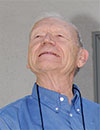 |
Sherwin Carlquist - 1977
Noted anatomist, naturalist, and explorer, Professor Carlquist has given us new understanding of adaptations of xylem, island evolution, and plant dispersal. - Claremont Graduate School, Pomona College, and Rancho Santa Ana Botanic Garden
Plant Discoveries - Sherwin Carlquist
|
|
Rogers McVaugh - 1977
For distinguished contributions to the exploration for, and systematic studies of, New World plants and to the general area of plant nomenclature. - University of Michigan
|
 |
Peter Hamilton Raven - 1977
In recognition of his excellent contributions to angiosperm biogeography and the systematics and general biology of Onagraceae as well as his outstanding success in both teaching and administration. - Missouri Botanical Garden
|
|
|
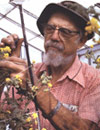 |
Charles M. Rick - 1976
For major work basic to economic importance involving both the cytology and genetics of crop plants and for spreading his knowledge and capabilities as an authority on this subject to many places in the world. - University of California, Davis
|
|
Paul Weatherwax - 1976
For long continued devotion to gaining an understanding of the probable origin and evolution of one of our most important crop plants, Zea mays, and for ancillary information essential to comprehending the problems dealing with and improving this most important grain. - Indiana University
|
|
Thomas W. Whitaker - 1976
For distinguished contributions to the understanding of economic plants, notably their improvement, and for a unique contribution in interpreting this understanding in terms of their domestication and their influence on the development of civilizations.
|
|
|
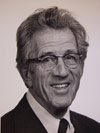 |
Harlan P. Banks - 1975
For his distinguished teaching of undergraduate and graduate students, numerous contributions to our knowledge of early land vegetation and services as a former President of the Botanical Society of America. - Cornell University
|
 |
F. Herbert Bormann - 1975
For his distinguished studies of nutrient and water flow through the Hubbard Brook Watershed, for his numerous important pronouncements on environmental hazards and for his responsible actions on behalf of the biological community. - Yale University
|
|
William C. Steere - 1975
For his fundamental contributions in the biology of the bryophytes and Arctic botany, and a long-term successful development in the administration of the New York Botanical Garden. - New York Botanical Garden
|
|
|
 |
Chester A. Arnold - 1974
Distinguished student of the structure and evolutionary significance of fossil plants; his many contributions have greatly advanced our knowledge of the vegetation of past ages and exemplify the highest standards of objective reporting and honest interpretations. - University of Michigan
|
|
Arthur Cronquist - 1974
Systematist sensu lato: creator of imaginative phylogenetic systems; effective organizer of and prolific contributor to monumental regional floras of North America; monographer and foremost student of North American Compositae. - New York Botanical Garden
|
|
Gerald W. Prescott - 1974
Influential teacher and knowledgeable student of the taxonomy, ecology and geography of fresh water algae, especially desmids, of North America; proponent of the importance of algae in limnology; prime mover in the founding of the Phycological Society of America. - University of Montana Biological Station, Flathead Lake
|
|
|
|
Charles Stacy French - 1973
Skillful and persistent investigator of the spectral properties and state of chlorophyll in tissues; inventor and gadgeteer par excellence; able and genial administrator of a productive center of botanical research. - Carnegie Institution of Washington at Stanford
|
|
Mildred Esther Mathias - 1973
Scholarly systematist and distinguished student of the Umbelliferae; enthusiastic and able teacher; her effective encouragement of tropical botanical education and her leadership in the development of American botanical gardens suggest the breadth of her influence. - University of California at Los Angeles
|
|
Richard Cawthon Starr - 1973
Distinguished student of soil algae, sexuality of desmids, and reproduction and differentiation of Volvox; his great service to biology in founding and maintaining the culture collection of algae at Indiana University is widely appreciated. - Indiana University
|
|
|
|
Aaron J. Sharp - 1972
Bryololgist, plant geographer; he has demonstrated the floristic relationships between North America and Asia from the Arctic to the Tropics. An outstanding and enthusiastic teacher, he has inspired and guided many who have become leading botanists. - University of Tennessee
|
|
Charles B. Heiser, Jr. - 1972
Scholarly student of the systematics and evolution of vascular plants; his original and significant contributions through extended studies of Compositae and Solanaceae have utilized many techniques; his interest in the origins of cultivated plants and weeds has led to a new appreciation of such plants as materials for important evolutionary studies. - Indiana University
|
 |
Frank Harlan Lewis - 1972
Eminent evolutionary biologist, teacher, and administrator; his studies of chromosome behavior in such genera as Clarkia, Mentzelia, Delphinium, and their relatives have provided the cytotaxonomic basis for his brilliant generalizations as to population dynamics, the processes of speciation, and the nature of biological taxa. - University of California at Los Angeles
|
|
|
|
Ruth Patrick - 1971
A gifted teacher and scholar with a consuming curiosity, she brings out the best in both scholars and students by her unique ability to generate excitement over intellectual ideas. Best known for her work on the systematics of diatoms, she has also been deeply concerned with the pollution of streams, rivers and bays, and has used her knowledge of diatom taxonomy and ecology - and her eloquence - to convince industries and cities of their responsibility in this area. - Academy of Natural Sciences in Philadelphia
|
|
Verne Grant - 1971
Evolutionist and student of the biology of flowers, especially of the phlox family. His works on speciation and adaptation in the higher plants are models of clarity and erudition. - University of Texas
|
|
A. Earling Porsild - 1971
Famous for his share in the Great Reindeer Trek; intrepid arctic explorer and distinguished student of the flora of Canada; and a Canadian diplomat as well. - National Museum of Canada
|
|
Murray F. Buell - 1971
Eminent ecologist, teacher, and editor; his research on ecological processes in eastern North America has led to an understanding and public awareness of man's role in changing natural ecosystems. - Rutgers University
|
|
|
|
Albert C. Smith - 1970
For his monumental work on the Flora of the Fiji Islands has set exceptionally high standards and placed him in the front ranks of the students of the systematics of higher plants. - University of Hawaii, now University of Massachusetts
|
|
Charles Drechsler - 1970
Though one of the leading authorities on root diseases of truck crops, he is best known for his masterful work on the zoophagous fungi and particularly the nematode-catching fungi which he has illustrated with beautiful artistry. - Plant Industry Station, Beltsville
|
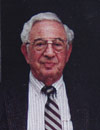 |
Arthur Galston - 1970
Superb teacher, creative investigator in plant hormones, and bold fighter to prevent misuse of such substances. - Yale University
|
 |
James M. Schopf - 1970
For his studies of fossil plants, and especially his work on the petrology of coal, are among the definitive works in this field. - U.S. Geological Survey, Ohio State University
|
|
|
|
Alexander H. Smith - 1969
For his prodigious work on the classification and ecology of the Agaricales, Criteria and Terminology in Fungi Imperfecti.
|
|
John R. Raper - 1969
For his demonstration of sex hormones in aquatic fungi and work on genetics of the Agaricales.
|
|
Jacob R. Schram - 1969
For his very thoughtful studies of the ecology of the black mining wastes of the Pennsylvania anthracite region.
|
|
Armin C. Braun - 1969
For his many significant studies on tumor inception and development in plants.
|
|
|
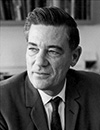 |
Elso S. Barghoorn - 1968
Brilliant investigator of structure and evolution in plants of the present and the remote past, and an outstanding pioneer in the discovery of a wide variety of precambrian fossils, the most ancient life-forms at present known to science.
|
|
F. K. Sparrow - 1968
For the unique breadth and quality of his scholarship and teaching, and for his superb monographic work on the fungi of fresh and marine waters of the world: A fabled collector, meticulous observer and vibrant personality.
|
|
|
|
C. J. Alexopoulos - 1967
Mycologist, authoritative writer in general mycology, an outstanding teacher; his research in diverse groups of fungi has greatly expanded our knowledge of these important plants.
|
|
William M. Miesey - 1967
Ecological physiologist, imaginative experimenter, a pioneer in elucidating the genecological nature of species; he has done much to encourage and help students in all areas of plant science.
|
|
|
|
George F. Papenfuss - 1966
Eminent investigator of the world's marine algae from the viewpoint of their comparative morphology, reproduction and systematic relationships. - University of California, Berkeley
|
|
Henry N. Andrews, Jr. - 1966
Original investigator in the field of paleobotany and author of several significant volumes on plant life of past ages.
|
|
R. H. Burris - 1966
Distinguished as a teacher of plant biochemists and for his outstanding contributions to the role of nitrogen in plants. - University of Wisconsin
|
|
|
|
Daniel I. Arnon - 1965
For his contributions to our knowledge of the mineral nutrients of plants and for his distinguished pioneering work on the way green plants utilize the energy of sunlight.
|
 |
Harold C. Bold - 1965
or his classical research on morphology, cytology, and cultivation of unicellular algae and his scholarly surveys of the plant kingdom; an outstanding teacher and considerate editor.
http://www.botany.utexas.edu/facstaff/facpages/mbrown/mbrownhome/bold/BoldUT/Bold4.htm
|
|
|
|
Ralph Emerson - 1964
For his unparalleled success in integrating research and teaching; a superb teacher and accomplished investigator, indefatigable in his efforts to inspire students to learn by discovery.
|
|
Sterling Hendricks - 1964
For his pioneering work on responses of organisms to their environment and for setting an ex-ample of the use of highly refined basic science for the solution of problems in applied disciplines.
|
|
Ira Wiggins - 1964
Intrepid botanical explorer, architect of floras of the Sonoran Desert and the Arctic slope of Alaska; we salute him as a botanical citizen of high purpose, persistent effort and rich production in systematic botany.
|
|
|
|
Harry A. Borthwick - 1963
For his research on the effects of light on plants and the enrichment of our understanding of the photoperiodic response, and for his role in the discovery of the red far-red system with its many ramifications in the life and form of plants.
|
 |
Vernon I. Cheadle - 1963
For his deep and abiding interest in science, his service to biology through untiring efforts to promote scholarly teaching and research, and for his major contribution to the interpretation of the evolution of vascular tissues in the monocotyledons and of the structure of phloem in the dicotyledons.
http://botany.org/newsite/Awards/detail/VernonCheadle.php
|
|
John C. Walker - 1936
For his sustained and perceptive research on the physiology and genetics of the host-parasite relationship in plants, and for his signal success in the development of disease resistant varieties of vegetable crops.
|
|
|
|
David R. Goddard - 1962
For his perceptive investigations of respiratory enzymes and respiratory mechanisms in plants, his deep interest in problems of cellular growth, and his wise counsel to students, colleagues and fellow botanists.
|
|
Marcus M. Rhoades - 1962
Cytogeneticist, whose fundamental contributions to our knowledge of chromosome structure and behavior, and of the relations between nucleus and cytoplasm, have greatly advanced the science of genetics, and furthered the development of improved strains of crop plants, especially of maize.
|
|
|
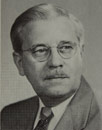 |
F. C. Steward - 1961
Plant physiologist and biochemist, widely known for his research on salt accumulation, nitrogen metabolism, and plant tissue cultures; also an editor of numerous important contributions in the field of plant physiology.
|
|
William Randolph Taylor - 1961
World-renowned authority on the algae, especially of marine waters, with first-hand knowledge of the floras of many parts of the world. Author of numerous important books and articles dealing with the algae of such diverse areas as the northeastern coast of North America, the Caribbean, the west coast of tropical America, and Bikini.
|
|
|
|
James P. Bennett - 1960
Distinguished investigator of dormancy and growth; helpful, wise, and understanding counselor; and godfather to succeeding generati6ns of students in plant physiology who have carried his influence to every corner of the globe.
|
|
William Dwight Billings - 1960
For his fruitful ano stimulating studies of the physiological behavior of plant species and ecotypes in nature. His investigations have covered the continent from east to west, giving us new insight into the ecology of deserts, forests, and meadows. He and his colleagues have created one of the world's leading ecological centers.
|
 |
Walter Conrad Muenscher - 1960
A truly versatile botanist, for his many distinguished contributions, especially his books on weeds, aquatic plants, poisonous plants and garden herbs. His lifelong devotion to all phases of botany has stimulated the lives and the careers of his numerous students.
|
|
Kenneth B. Raper - 1960
For his pioneering and continuing studies on the slime molds and for his distinguished contributions to the morphology and classification of Aspergillus and Penicillium.
|
|
Reed Clark Rollins - 1960
A leading exponent of an up-to-date plant taxonomy that embraces morphology, ecology, cytology, and genetics, in well balanced emphasis. He has brought new lustre to an already distinguished institution.
|
|
|
|
James Bonner - 1959
Outstanding in plant biochemistry, prolific and original contributor to diverse aspects of that intricate field, author of several penetrating and widely influential texts of plant biochemistry and plant physiology.
|
|
Lincoln Constance - 1959
Astute and sound taxonomist, pioneer in cytotaxonomy, and, in an era of diversified outbursts in scientific endeavors, distinguished exponent of the dictum that plants are still plants.
|
|
Adriance S. Foster - 1959
Bold and yet careful investigator in histogenesis, and especially of the shoot apex, where all kinds of things begin to happen, and author of several trail-blazing volumes on comparative morphology and plant anatomy.
|
|
Bernard S. Meyer - 1959
Outstanding plant physiologist, author of an exceedingly important and much used volume in that field, devoted and unselfish servant in the scholarly activities of The Botanical Society of America.
|
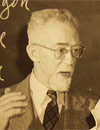 |
Loren C. Petry - 1959
Paleobotanist and anatomist, unusually effective botanical teacher who has skillfully guided the careers of thousands of students in the right direction, wise and generous counselor in scientific affairs.
|
|
|
|
Harry James Fuller - 1958
For continued, self-sacrificing service to Botany, whether as a teacher, a writer of needed textbooks, an editor, or as an officer of the Botanical Society of America. - University of Illinois
|
|
Philip Alexander Munz - 1958
For his penetrating studies of the Onagraceae, of the flora of California, and for his farsightedness and breadth of purpose resulting in the development of a model botanic garden. - Rancho Ana Botanic Garden
|
 |
Lester Whyland Sharp - 1958
His contributions, both by personal investigations and by successive editions of carefully edited textbooks, have made plant cytology a significant field of Botany. - Cornell University
|
|
|
|
Donald F. Jones - 1957
Through many years an outstanding geneticist, plant breeder and horticulturalist, a profound and versatile student of a wide range of hereditary phenomena, especially known for his contributions to an understanding of hybrid vigor, and for his pioneer role in the development of hybrid corn.
|
|
Paul Mangelsdorf - 1957
Leading investigator in the fields of agronomy, genetics and economic botany, foremost authority on the history and evolution of maize, for his contribution to the classification, morphology and genetics of corn, and for his role in the development of maize breeding programs throughout the Americas.
|
 |
Barbara McClintock - 1957
Early student of radiation-induced chromosomal aberrations, pioneer in the use of such aberrations for purposes of genome analysis, important contributor to the theory of gene structure, world leader in the broad field of cytogenetics.
http://nobelprize.org/medicine/laureates/1983/mcclintock-autobio.html
|
|
William H. Weston - 1957
Master of the spoken and written word, for his contributions to the lower fungi, which are models of perfection in execution and writing and particularly for his unselfish devotion to his students and his superlative ability as a graduate teacher.
|
|
|
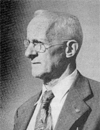 |
Harry Ardell Allard - 1956
For his pioneer investigations of photoperiodism in plants and for his long-continued contributions to our knowledge of this phenomenon and to other areas of botanical science.
|
 |
Edagar Anderson - 1956
For his extensive contributions to the general problems of evolution, including the species problem, self-sterility, and particulary for his sponsorship of the idea of introgressive hybridization.
|
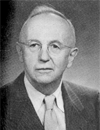 |
Dixon Lloyd Bailey - 1956
Discering analyst and interpreter of the concepts of plant pathology, enriching influence in the lives of his associates, and outstanding contributor to the vigor of scientific study in Canada.
|
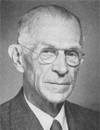 |
Irving Widmer Bailey - 1956
Plant anatomist and inspiring teacher, for his outstanding contributions on the structure of the cell wall and the histology of the cambium and for his application of anatomy and morphology to problems of evolution of angiosperms.
|
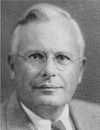 |
Harley Harris Bartlett - 1956
For his unflagging support and encouragement of the whole field of botany and its students and for his diverse contributions to paleobotany, enthnobotany, ecology, and systematics.
|
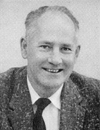 |
George Wells Beadle - 1956
For his long list of contributions to the cytogenetics of Zea mays and Drosophila and the tremendous impetus he has lately given to the field of phhysiological and chemical genetics, particularly in Neurospora.
|
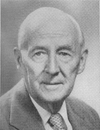 |
Ernst Athearn Bessey - 1956
Who with an undeviating zeal for accuracy has fashioned our generation's magisterial presentation of the science of mycolocy.
|
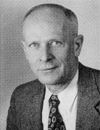 |
Sidney Fay Blake - 1956
For his scholarly contributions to the taxonomy of the Compositae and other vascular plants and to our knowledge of the floras of the world.
|
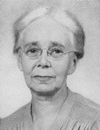 |
Emma Lucy Braun - 1956
For her contribution to our knowledge of the origin and structure of the Eastern American deciduous forest. Her critical evaluation of the works of others, her capacity to observe correctly in the field and to interpret forcefully have given biogeographers a new point of departure.
|
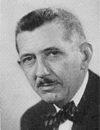 |
Stanley Adair Cain - 1956
Whose sensitive perception of complex environmental problems and intimate understanding of conflicting points of view have provided us with many new insights. His courage in opening up new areas has made him an outstanding interpreter and a leader of men.
|
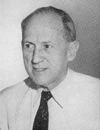 |
Ralph Works Chaney - 1956
For his notable achievements in paleobotany, which have so greatly enriched our knowledge of Tertiary floras.
|
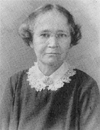 |
Agnes Chase - 1956
One of the world's outstanding agrostologists and preeminent among American students in this field.
|
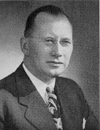 |
Jens Christian Clausen - 1956
For his work toward the improvement of our understanding of the nature and origin of plant species.
|
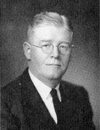 |
Ralph Erskine Cleland - 1956
For his extensive researches into the species relationships and segmental-interchange problems in Oenothera and also for his statesmanship in representing plant science at the national level.
|
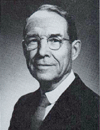 |
Henry Shoemaker Conard - 1956
Taxonomist, morphologist, mycologist, ecologist, bryologist, shining proof that versatility may serve only to multiply excellences, and above all a beloved teacher.
|
 |
William Skinner Cooper - 1956
One of the creators of an American tradition in ecology. His deep feeling for the relatedness and parallel developments of geology, physiology, taxonomy, and vegetation science has been a guiding light to a whole generation.
|
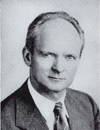 |
John Nathaniel Couch - 1956
Whose studies of the small, the intricate, and the odd among fungi and their relatives have come to fructification in the vivid, the significant, and the delectable.
|
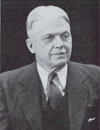 |
Bernard Ogilvie Dodge - 1956
Whose perceptive researches into the taxonomy, evolution, and pathological relations of the fungi have not been surpassed, but only overshadowed, by his discovery and exploitation of Neurospora as a principal source of the genetical truth.
|
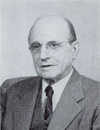 |
Benjamin Minge Duggar - 1956
For his outstanding researches in plant physiology, plant pathology, and mycology for over half a century and for his wise and patient counseling to many students for whom he provided inspiration, imagination, and high standards of scholarship.
|
 |
Arthur Johnson Eames - 1956
Plant anatomist and morphologist, for his sustained researches on the morphology and anatomy of vascular plants and for his noteworthy contributions to our knowledge of floral development and evolution.
|
 |
Katherine Esau - 1956
Plant anatomist and histologist, for her numerous contributions on tissue development of vascular plants and in particular for her outstanding studies on the structure, development, and evolution of phloem.
http://botany.org/bsa/misc/esau.html
|
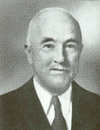 |
Alexander William Evans - 1956
Who, to a fruitful life as the honored master of hepaticology has added a second as profitably devoted to the disentangling of the noble genus Cladonia.
|
 |
Henry Allan Gleason - 1956
For his work on tropical and temperate floras of America and for the ideas and inspiration which he has supplied to the field of systematic botany.
|
 |
Thomas H. Kearney - 1956
For his early theoretical contributions to plant geography, his work in cotton breeding, his systematic studies in the Malvaceae, and his part in the preparation of the "Flora of Arizona."
|
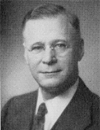 |
George Wannamaker Keitt - 1956
For his many contributions to plant pathology, and in particular for his excellent researches on fruit-tree diseases, for his leadership in plant-pathology administration, and for his patience and kindness in counseling many students for whom he provided by illustrative example the life of a true gentleman.
|
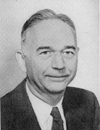 |
Paul Jackson Kramer - 1956
For productive investigations in various branches of plant physiology, and especially for significant contributions to our knowledge of plant-water relations and tree physiology.
|
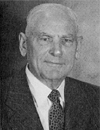 |
Louis Otto Kunkel - 1956
For his researches and indefatigable efforts in experimentation, for his wise counseling of associates and students, for experimental techniques and publications, and for his productive studies on the nature of plant viruses.
|
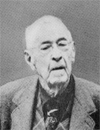 |
Daniel Trembly MacDougal - 1956
For numerous contributions over many years to our knowledge of various phases of plant physiology and plant ecology, and especially for advances in our understanding of growth and physiology of tree species.
|
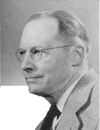 |
George Willard Martin - 1956
Courageous investigator, teacher, editor, and philosopher, who has brought to the elucidation of the classification of the fungi field familarity, laboratory exactness and a critical intelligence that neither claims nor acknowledges authority.
|
 |
Maximino Martinez - 1956
For his many technical and semipopular books and articles on the plants of Mexico. His works have made him a recognized authority on the Mexican flora and the use of plants by man.
|
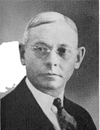 |
Frederick Wilson Popenoe - 1956
For his efforts toward the improvement and increased utilization of horticultural crops in tropical America.
|
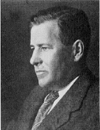 |
William Jacob Robbins - 1956
A physiologist whose studies have enlarged our knowledge of the growth and nutrition of plants, and an administrator the breadth of whose labors has notably contributed to the growth and nutrition of all phases of botany.
|
 |
Andrew Denney Rodgers III - 1956
A unique figure on the American literary scene. His biographies of well-known botanists and histories of phases of the development of botanical science are readable, scholarly, and authentic.
|
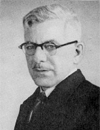 |
Jacques Rousseau - 1956
Whose explorations of the unknown North have provided an important contribution to Pleistocene biogeography. His sympathetic interest in Indian and Eskimo folklore and ways of life and his encyclopedic knowledge of the history of Canadian exploration have yielded a rich harvest of ethnobotanical studies.
|
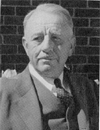 |
Karl Sax - 1956
For his classical studies on the chromosomes of wheat, his continued interest in the chromosomes of the ornamental woody plants, and his extensive contributions about the effect of irradiation on chromosome structure.
|
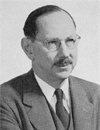 |
Paul Bigelow Sears - 1956
Whose pioneering efforts in pollen analysis and continued interest in geochronological problems have made him the leader of all in this field, on our continent. The keenness of his mind, the warmth of his personality, the quality of his writing, and his capacity to relate all scientific problems to man have earned for him the distinction of an exemplary figure in American science.
|
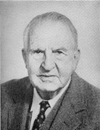 |
Homer Leroy Shantz - 1956
Plant physiologist, plant ecologist, and administrator of note. His contributions to the understanding of drought resistance in plants, to the ecology of grasslands, and to world-wide plant geography have been laudable achievements in botanical science.
|
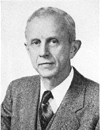 |
Edmund Ware Sinnott - 1956
Morphologist, anatomist, geneticist, and botanical statesman, for his numerous, varied, and sustained contributions to plant anatomy, histology, evolution, and botanical theory.
|
 |
Folke Karl Skoog - 1956
For outstanding contributions to knowledge in various subdivisions of plant physiology, especially tissue culture, hormonal regulation of plant growth, and algal physiology.
|
 |
Gilbert Morgan Smith - 1956
Morphologist, for his numerous contributions to cryptogamic botany, and in particular for his study of life histories of marine and fresh-water algae.
|
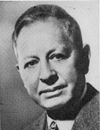 |
Elvin Charles Stakman - 1956
For his illustrious international leadership in science, for his recognized world leadership in researches on the pathogens of cereal smuts and rusts, and for his genius in inspiring students and workers to labor untiringly to provide food for mankind.
|
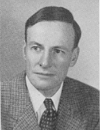 |
George Ledyard Stebbins - 1956
For his specific contributions to the cytogenetics of parthenogenesis, hybridization, and polyploidy, particularly in Guayule, Kok-saghyz, and the forage grasses, and for his outstanding review of the whole problem of evolution in plants.
|
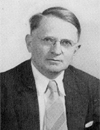 |
John Albert Stevenson - 1956
Whose encyclopedic knowledge of the fungi of the world and the diseases they induce has with generosity and humility been placed at the service of a generation of botanists.
|
 |
Kenneth Vivian Thimann - 1956
For his extensive and preeminent contributions to the biochemical physiology of green and nongreen plants and to the physiology of plant growth.
|
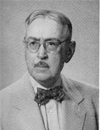 |
Edgar Nelson Transeau - 1956
For his lifetime of support and encouragement of botanical science in its broadest sense, both its educational and scientific aspects. He has made substantial contributions to plant ecology, algology, and to botanical education at all levels, from high school to graduate school.
|
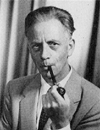 |
Cornelius Bernardus Van Niel - 1956
Whose studies in the realm where kingdoms and classes scarcely exist have provided illumination for syntheses of diverse phases of biology.
|
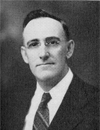 |
John Ernst Weaver - 1956
For his lifetime of research on the ecology of the grasslands. His investigations have contributed to the understanding of the dynamics of vegetation and have helped provide a necessary background for new policies in range management.
|
 |
Fritz Warnolt Went - 1956
For his breadth of constructive interest in botanical science and especially for his contributions in the fields of plant physiology and ecology. The first botanist to put the assay of auxins on a quantitative basis, he subsequently has added substantially to our knowledge of the hormonal relations of plants. He has also been an outstanding investigator of the growth of plants under controlled environmental conditions.
|
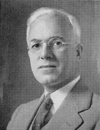 |
Ralph Harley Wetmore - 1956
Plant anatomist and student of morphogenesis, for his numerous investigations of the developmental anatomy of vascular plants and for his studies on morphogenesis of vascular cryptograms.
|
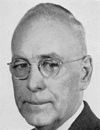 |
Truman George Yuncker - 1956
For his lifetime of effective teaching at the undergraduate level, which has resulted in launching many able young scholars into careers in botany, and for effective contributions in taxonomy, especially of the Piperaceae.
|
|

